Goosebumps in the home cinema with Quadral
Pick your movie and prepare the popcorn – that’s what our products say for the ultimate home cinema experience. Perfectly matched loudspeaker bundles guarantee a distortion-free and crystal-clear sound with unbelievable sound depth and make films a three-dimensional experience. As a specialist in sound technology at the highest level, Quadral is your contact for setting up your home cinema.
With our product bundles, we offer perfectly matched loudspeakers for every application. Whether you need bookshelf speakers that can be set up flexibly or built-in wall speakers – Quadral provides you with the right products for a top-class Dolby Surround experience.
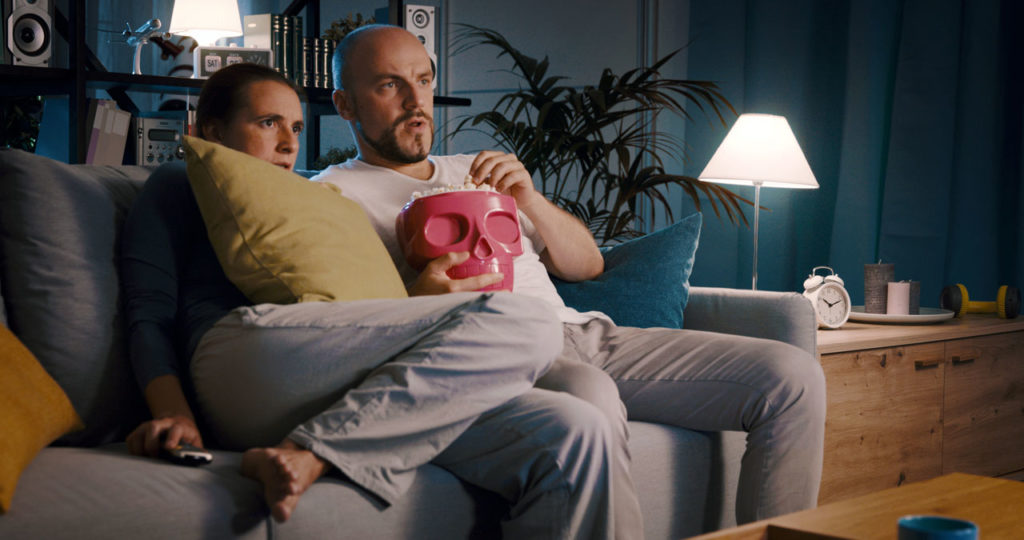
Our set recommendations
Find out here which combinations our experts recommend with our loudspeaker series Signum, Chromium and of course Aurum. Select the desired home theater system and swipe left or right. Do you already know the differences between the home cinema systems 5.1., 7.1. and 5.1.2.? In the guide you will find all important information.
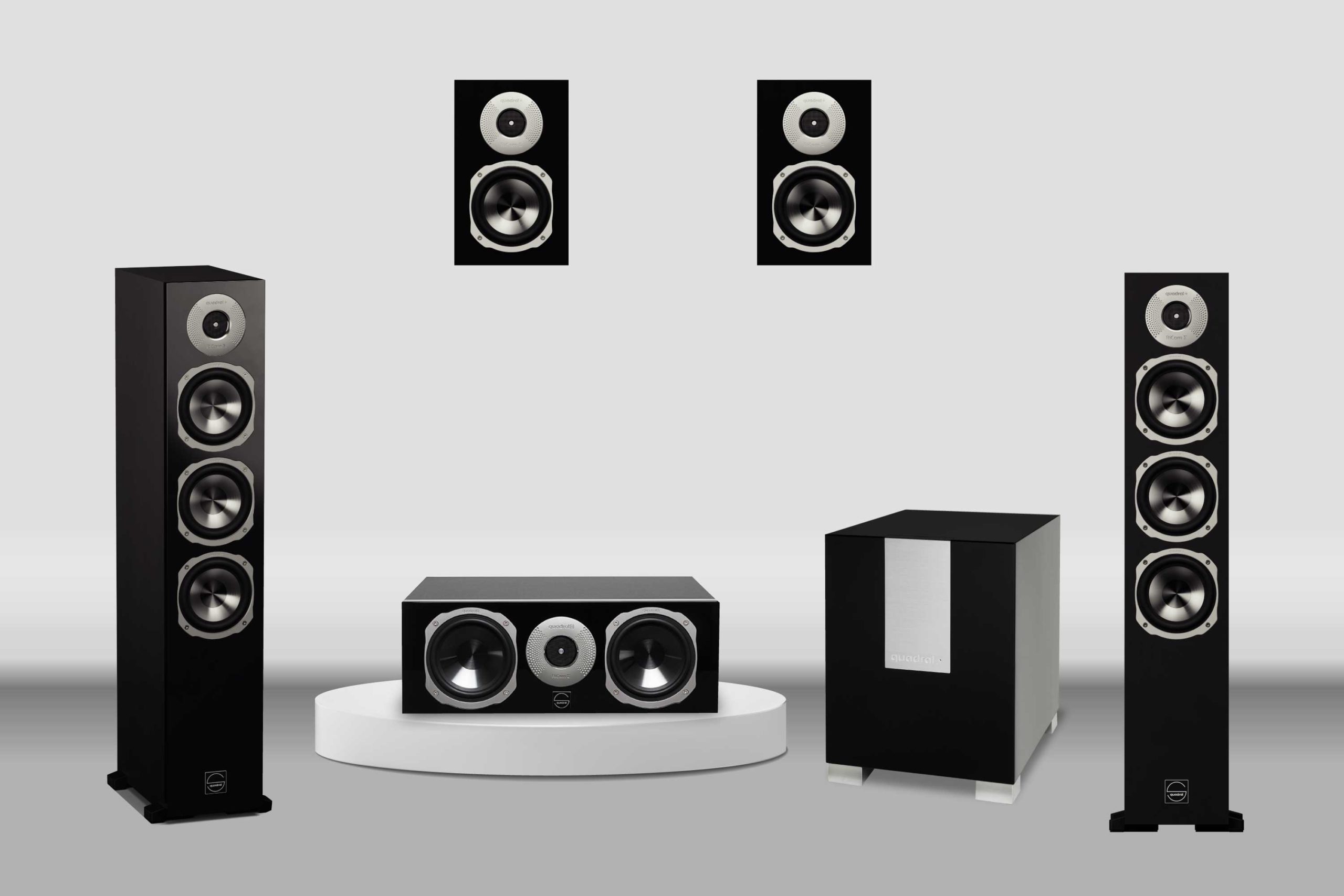
The set consists of:
- 2x Signum 70 (Tower)
- 2x Signum Phase 1 (Wall)
- 1x Signum 10 (Center)
- 1x Qube S 8 (Woofer)
Ideal for an area of 15 to 25 square meters
To the advisor
€ 2.344,-

The set consists of:
- 2x Signum 70 (Tower)
- 2x Signum Phase 1 (Wall)
- 1x Signum 10 (Center)
- 1x Qube S 8 (Woofer)
Ideal for an area of 15 to 25 square meters
To the advisor
€ 2.344,-
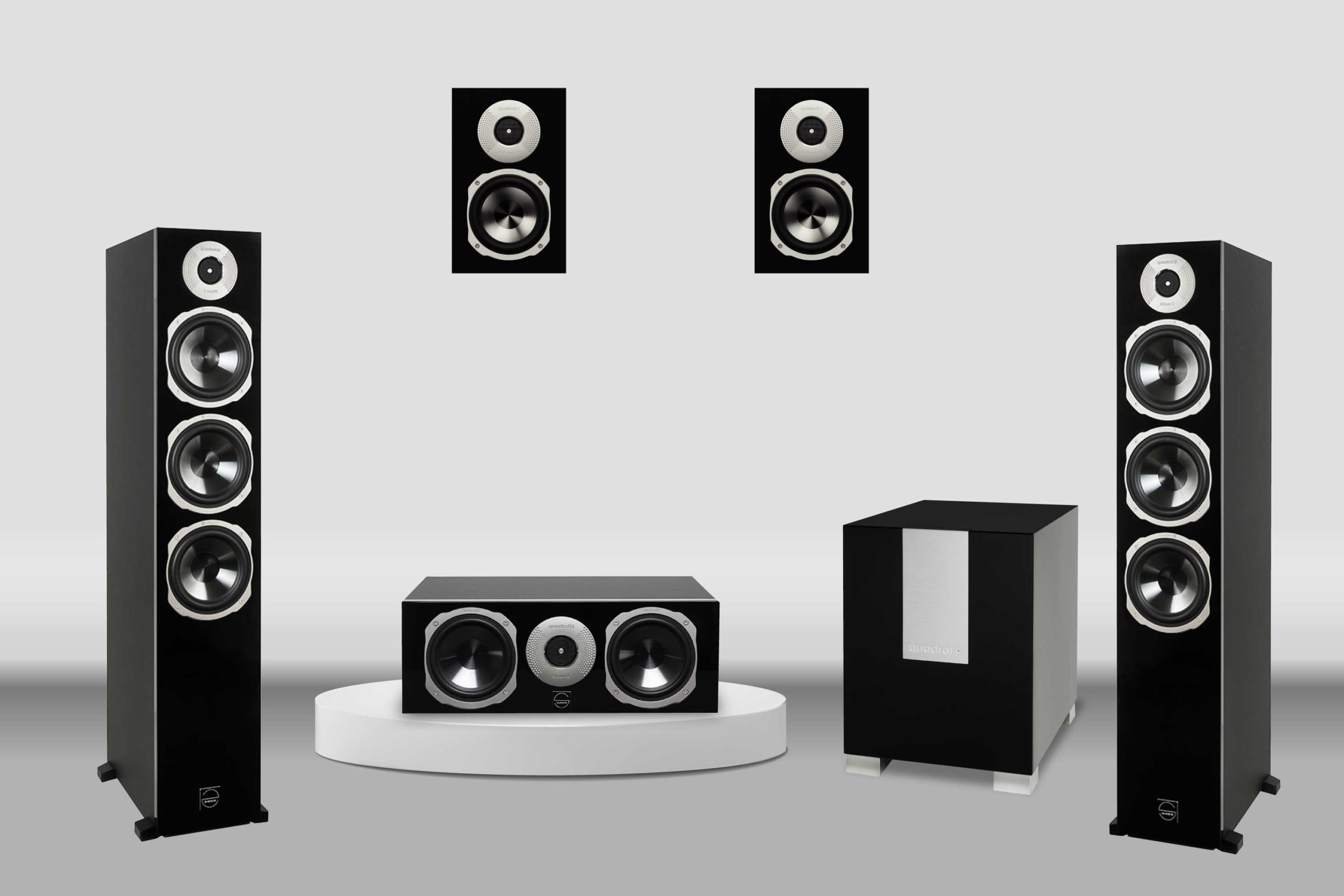
The set consists of:
- 2x Signum 90 (Tower)
- 2x Signum Phase 1 (Wall)
- 1x Signum 10 (Center)
- 1x Qube S8 (Woofer)
To the advisor
€ 2.544,-

The set consists of:
- 2x Signum 90 (Tower)
- 2x Signum Phase 1 (Wall)
- 1x Signum 10 (Center)
- 1x Qube S8 (Woofer)
To the advisor
€ 2.544,-
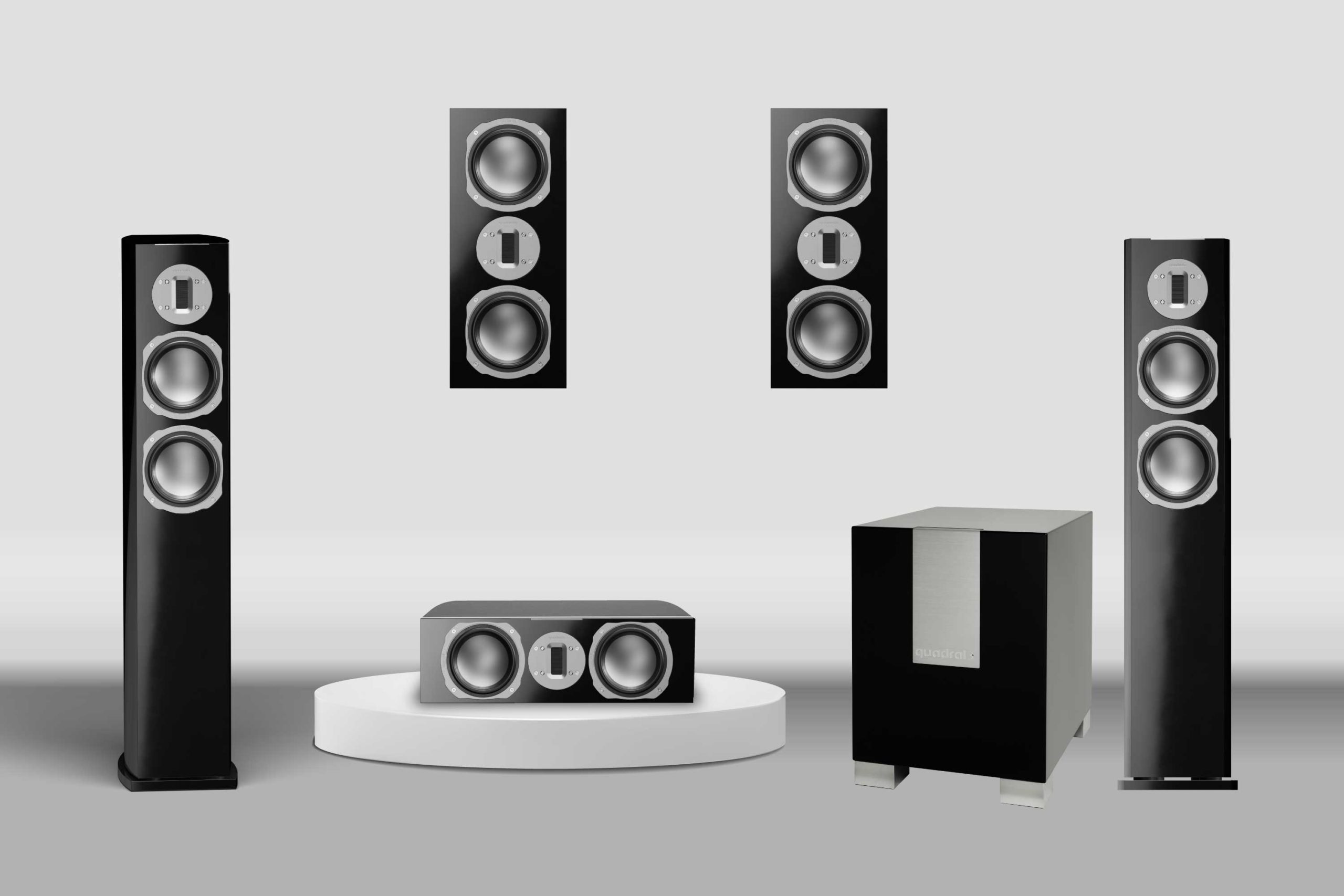
The set consists of:
- 2x Chromium 65 (Tower)
- 2x Chromium Phase (Wall)
- 1x Chromium 15 (Center)
- 1x Qube S8 (Woofer)
Ideal for an area of 15 to 25 square meters
To the advisor
€3.839

The set consists of:
- 2x Chromium 65 (Tower)
- 2x Chromium Phase (Wall)
- 1x Chromium 15 (Center)
- 1x Qube S8 (Woofer)
Ideal for an area of 15 to 25 square meters
To the advisor
€3.839
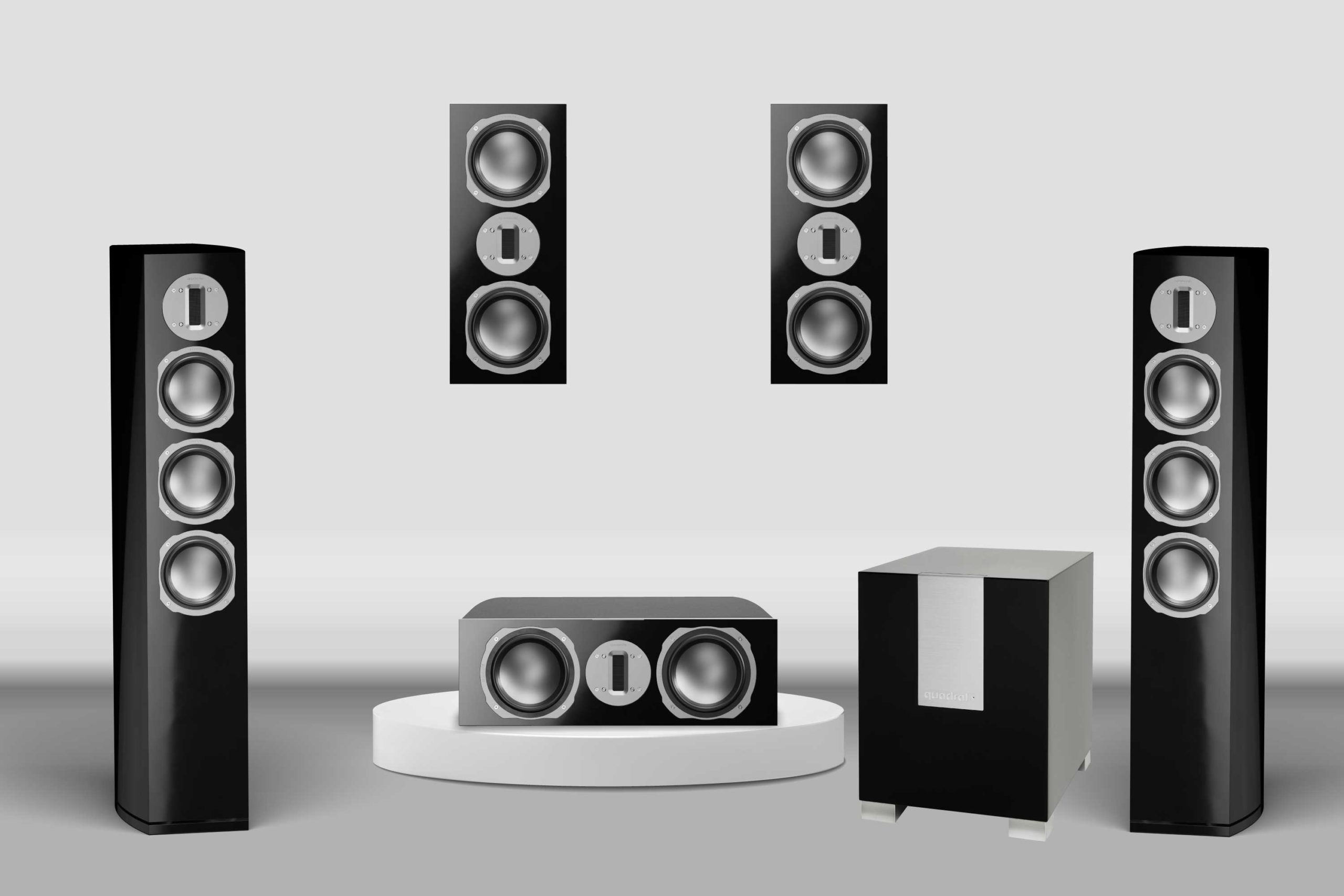
The set consists of:
- 2x Chromium 85 (Tower)
- 2x Chromium Phase (Wall)
- 1x Chromium 25 (Center)
- 1x Qube CS10 (Woofer)
Ideal for an area of 15 to 25 square meters
To the advisor
€ 5.093,-

The set consists of:
- 2x Chromium 85 (Tower)
- 2x Chromium Phase (Wall)
- 1x Chromium 25 (Center)
- 1x Qube CS10 (Woofer)
Ideal for an area of 15 to 25 square meters
To the advisor
€ 5.093,-
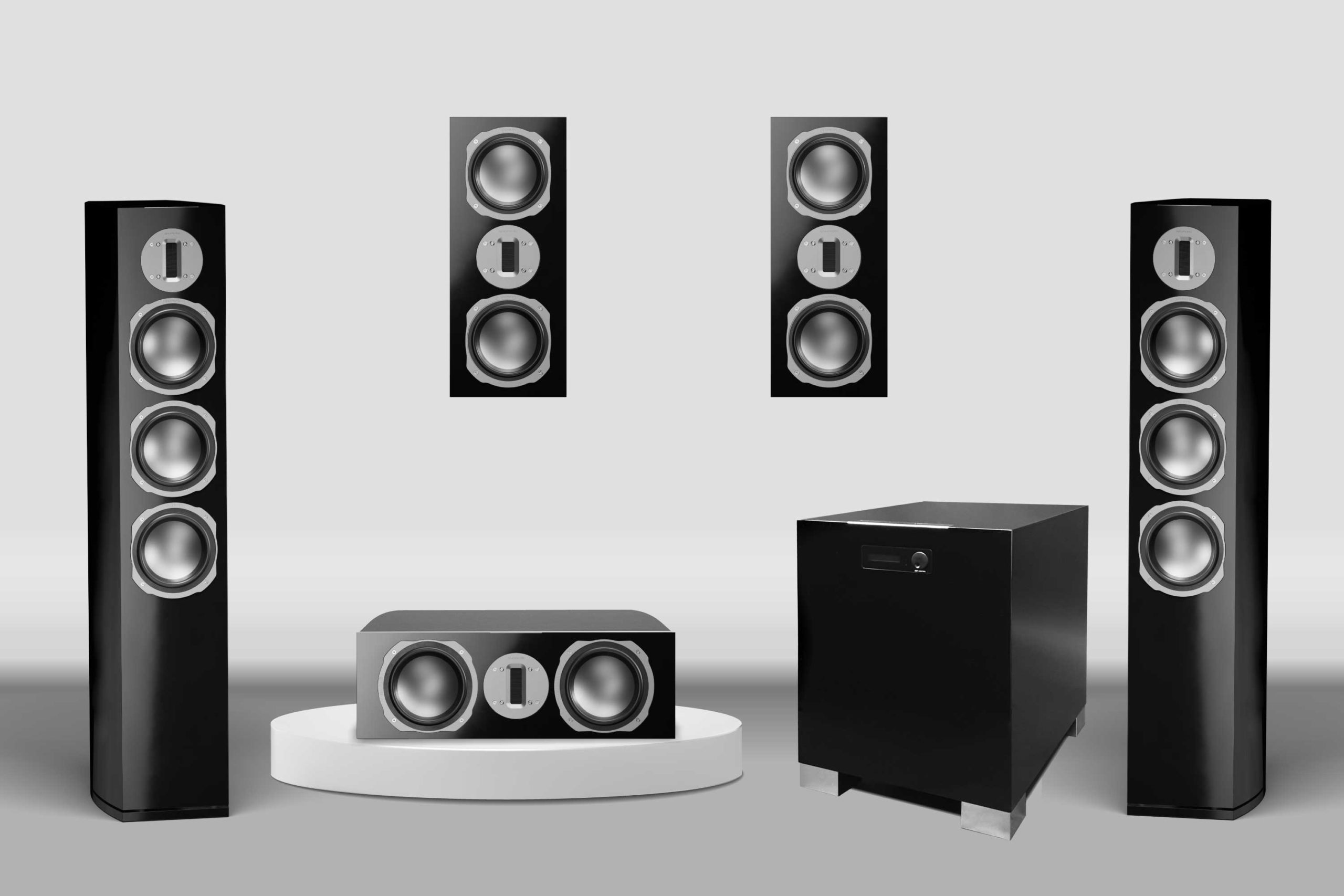
The set consists of:
- 2x Chromium 105 (Tower)
- 2x Chromium Phase (Wall)
- 1x Chromium 25 (Center)
- 1x Qube Orkus DSP (Woofer)
Ideal for an area of 20 to 35 square meters
To the advisor
€ 7.394,-

The set consists of:
- 2x Chromium 105 (Tower)
- 2x Chromium Phase (Wall)
- 1x Chromium 25 (Center)
- 1x Qube Orkus DSP (Woofer)
Ideal for an area of 20 to 35 square meters
To the advisor
€ 7.394,-
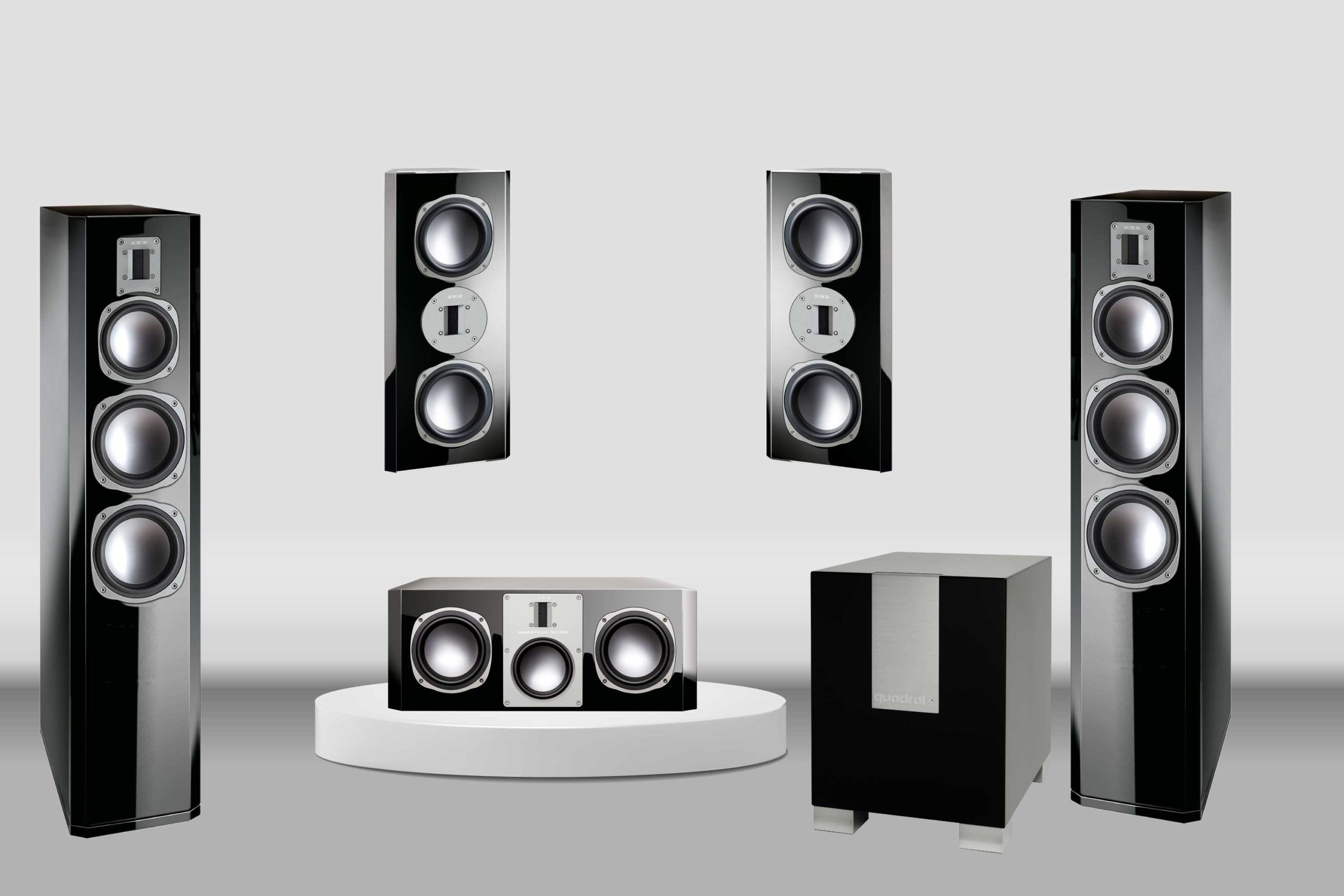
The set consists of:
- 2x Orkan (Tower)
- 2x Phase (Wall)
- 1x Base Maxime (Center)
- 1x Qube CS10 (Woofer)
Ideal for an area of 15 to 35 square meters
To the advisor
€ 9.998,-

The set consists of:
- 2x Orkan (Tower)
- 2x Phase (Wall)
- 1x Base Maxime (Center)
- 1x Qube CS10 (Woofer)
Ideal for an area of 15 to 35 square meters
To the advisor
€ 9.998,-
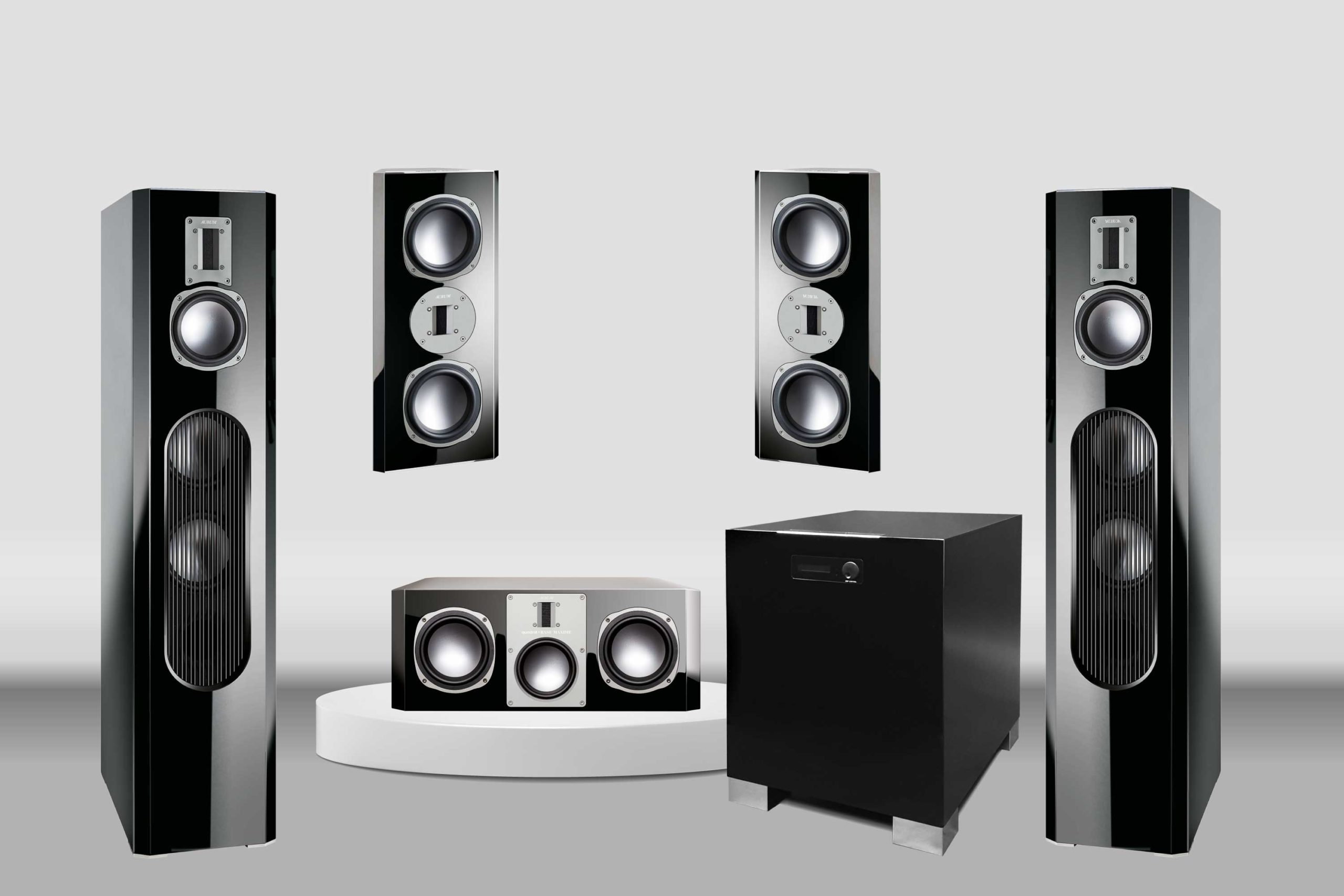
The set consists of:
- 2x Aurum Montan (Tower)
- 2x Aurum Phase (Wall)
- 1x Aurum Base Maxime (Center)
- 1x Qube Orkus DSP (Woofer)
Ideal for an area of 15 to 35 square meters
To the advisor
€ 13.999,-

The set consists of:
- 2x Aurum Montan (Tower)
- 2x Aurum Phase (Wall)
- 1x Aurum Base Maxime (Center)
- 1x Qube Orkus DSP (Woofer)
Ideal for an area of 15 to 35 square meters
To the advisor
€ 13.999,-
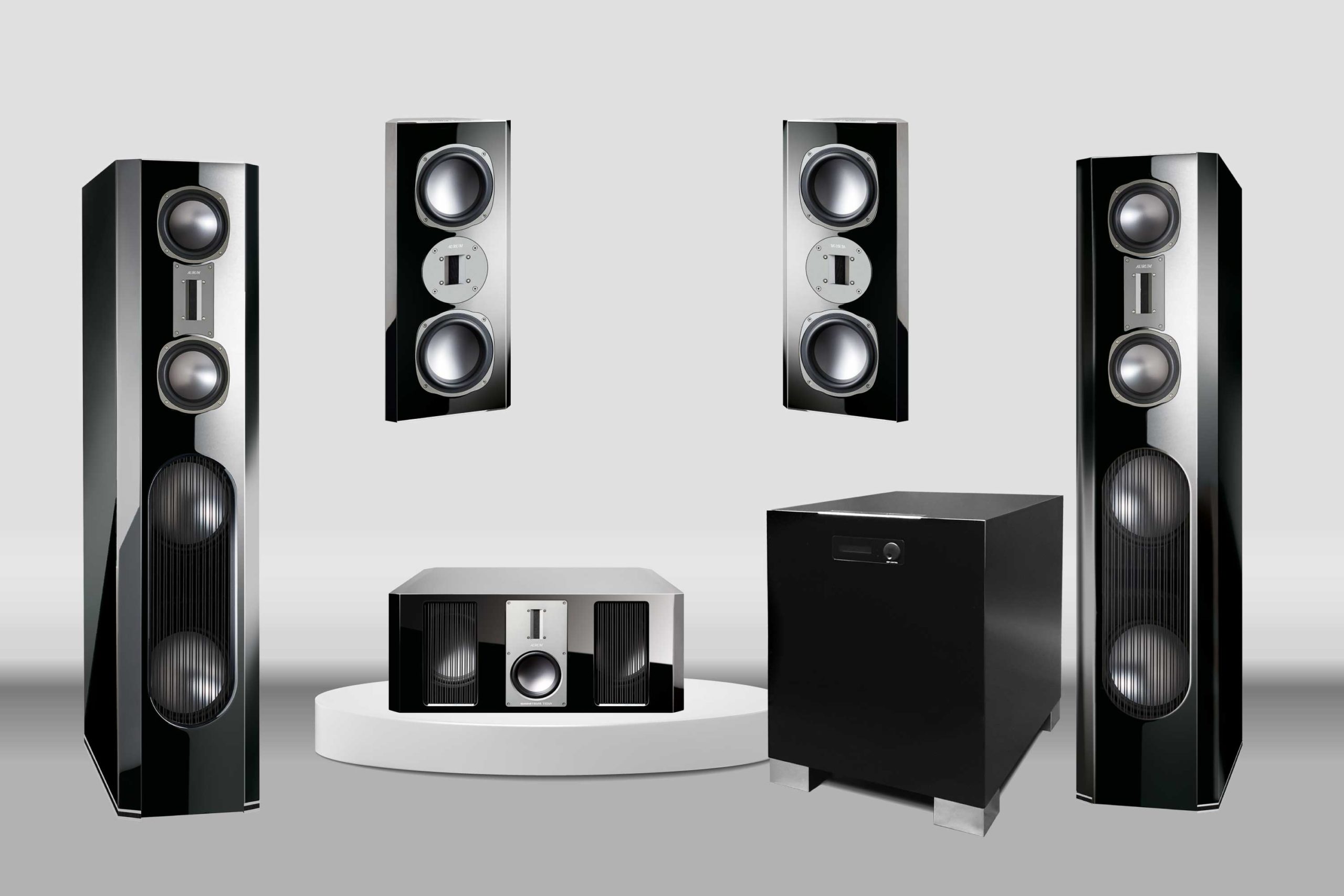
The set consists of:
- 2x Aurum Vulkan (Tower)
- 2x Aurum Phase (Wall)
- 1x Aurum Base Titan (Center)
- 1x Qube Orkus DSP (Woofer)
Ideal for an area of 20 to 40 square meters
To the advisor
€ 22.249,-

The set consists of:
- 2x Aurum Vulkan (Tower)
- 2x Aurum Phase (Wall)
- 1x Aurum Base Titan (Center)
- 1x Qube Orkus DSP (Woofer)
Ideal for an area of 20 to 40 square meters
To the advisor
€ 22.249,-
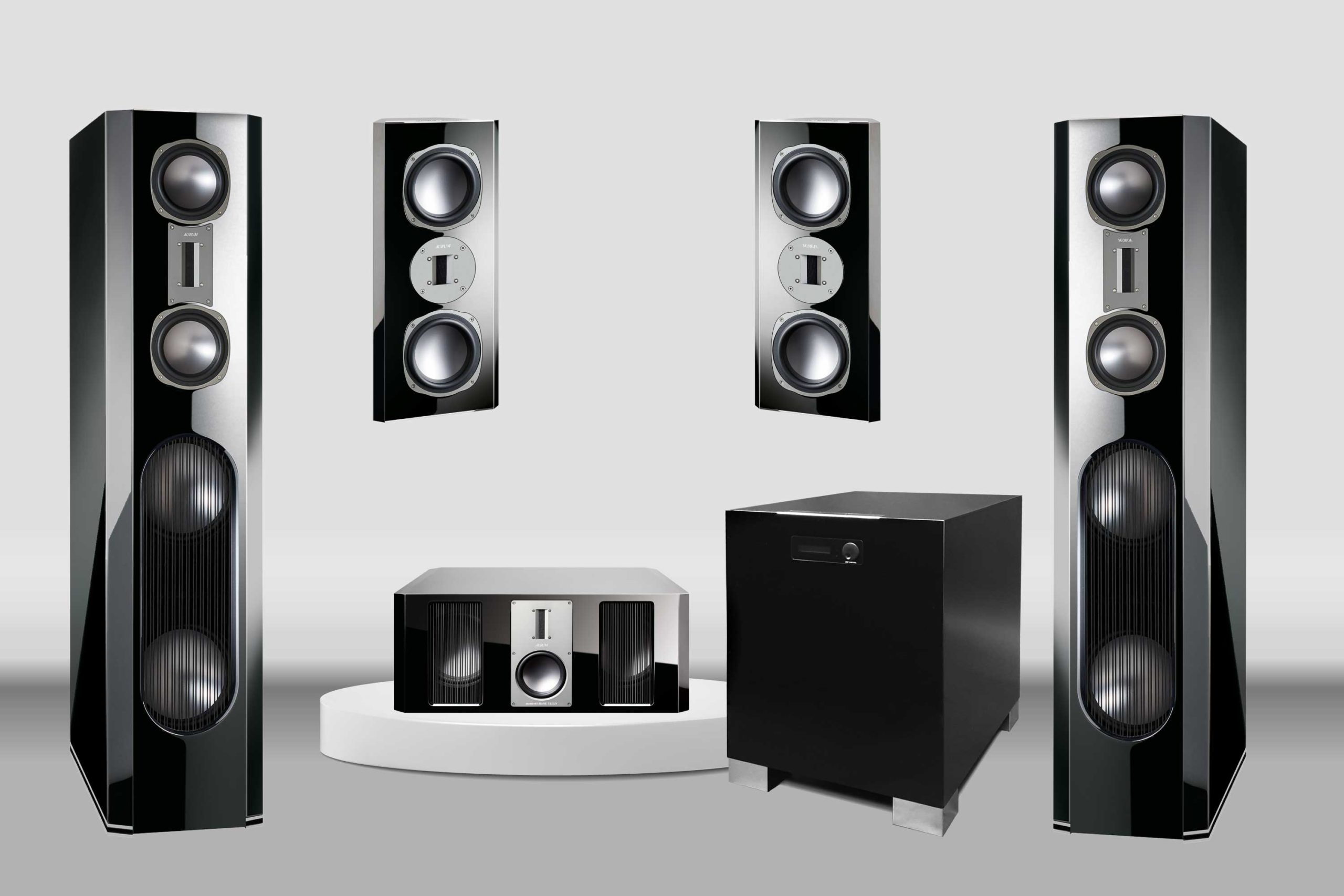
The set consists of:
- 2x Aurum Titan (Tower)
- 2x Aurum Phase (Wall)
- 1x Aurum Base Titan (Center)
- 1x Qube Orkus DSP (Woofer)
Ideal for an area of 25 to 45 square meters
€ 26.249,-

The set consists of:
- 2x Aurum Titan (Tower)
- 2x Aurum Phase (Wall)
- 1x Aurum Base Titan (Center)
- 1x Qube Orkus DSP (Woofer)
Ideal for an area of 25 to 45 square meters
€ 26.249,-

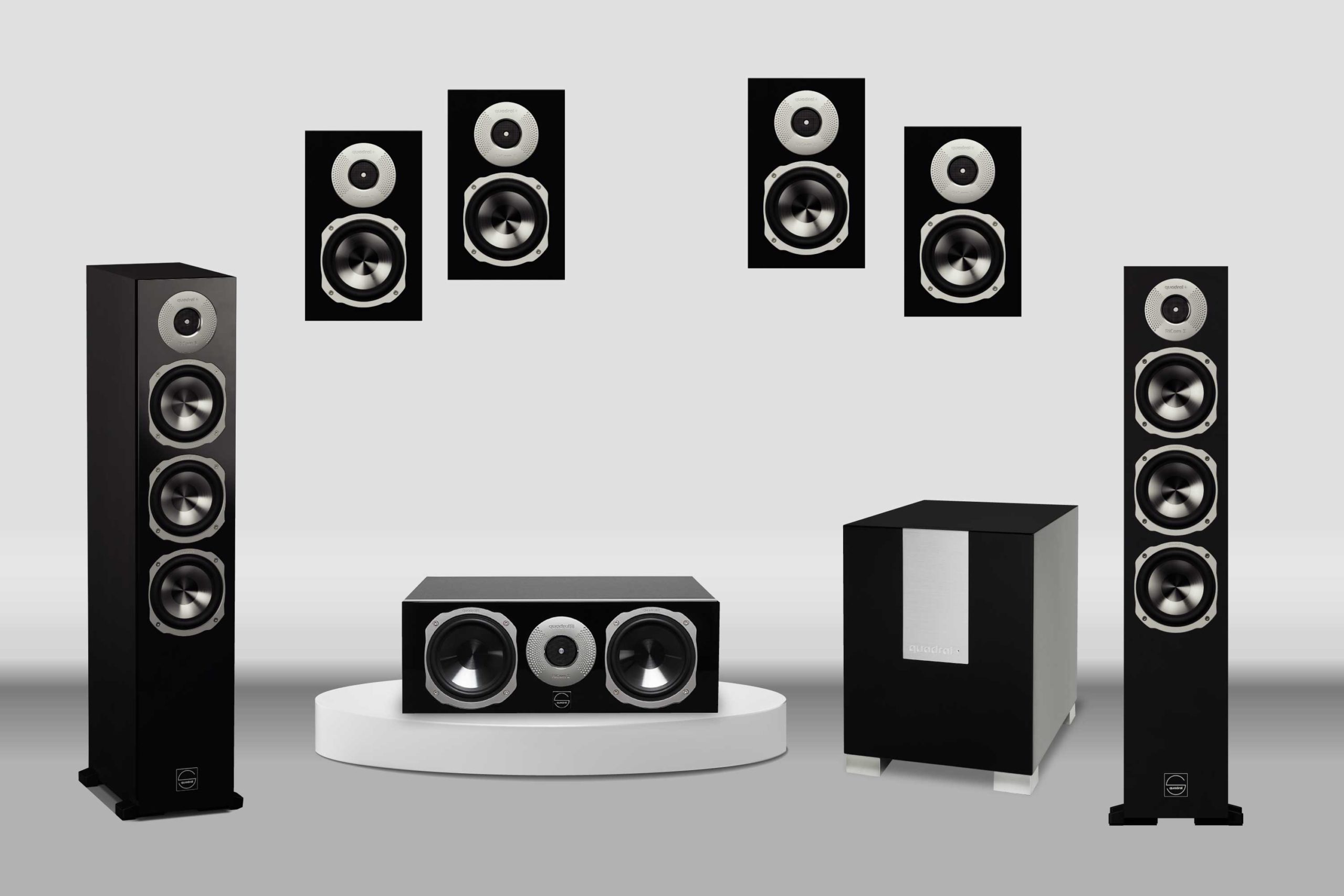
The set consists of:
- 2x Signum 70 (Tower)
- 4x Signum Phase 1 (Wall)
- 1x Signum 10 (Center)
- 1x Qube S8 (Woofer)
Ideal for an area of 15 to 25 square meters
To the advisor
€2.842,-

The set consists of:
- 2x Signum 70 (Tower)
- 4x Signum Phase 1 (Wall)
- 1x Signum 10 (Center)
- 1x Qube S8 (Woofer)
Ideal for an area of 15 to 25 square meters
To the advisor
€2.842,-
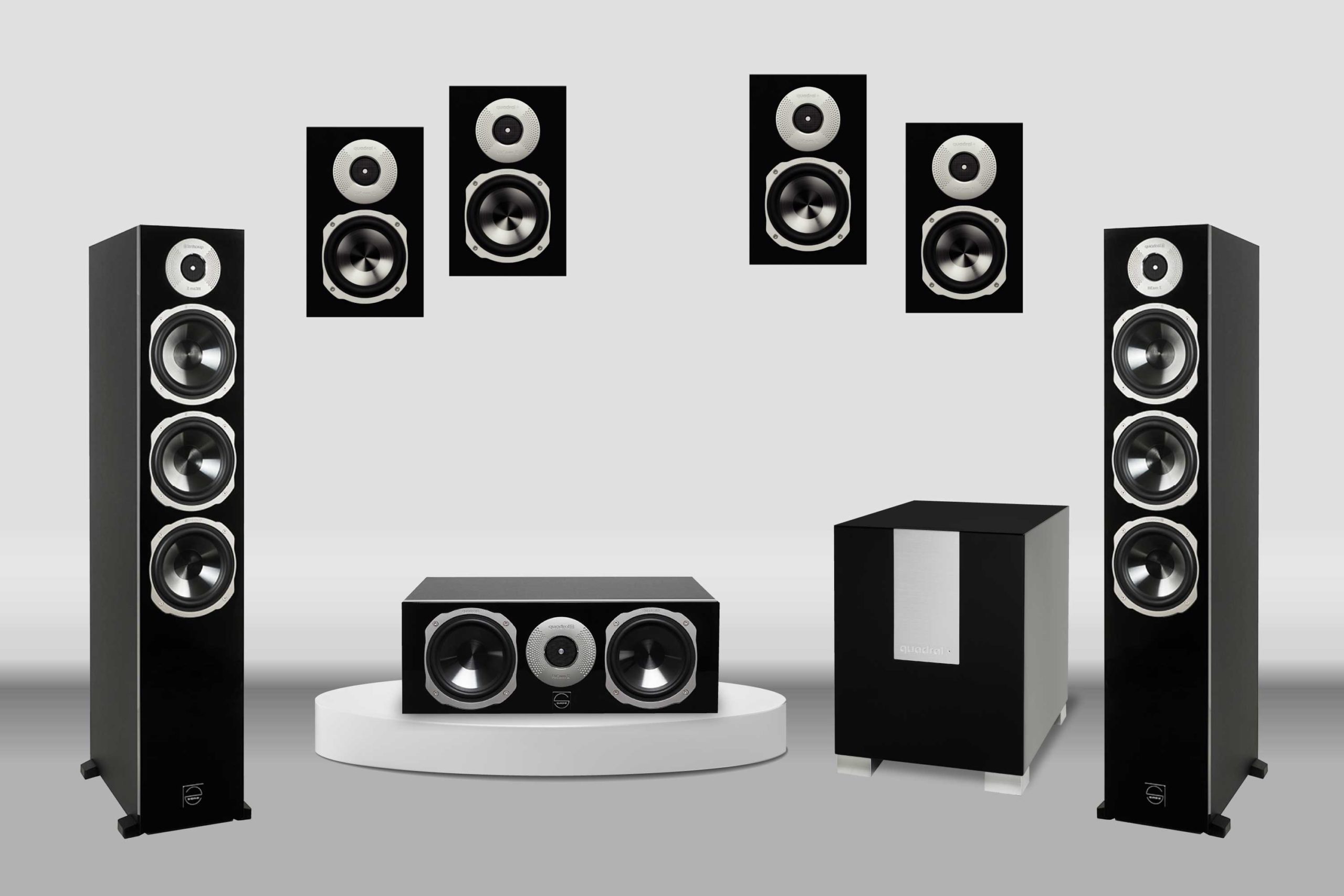
The set consists of:
- 2x Signum 90 (Tower)
- 4x Signum Phase 1 (Wall)
- 1x Signum 10 (Center)
- 1x Qube CS10 (Woofer)
Ideal for an area of 15 to 25 square meters
To the advisor
€ 3.042,-

The set consists of:
- 2x Signum 90 (Tower)
- 4x Signum Phase 1 (Wall)
- 1x Signum 10 (Center)
- 1x Qube CS10 (Woofer)
Ideal for an area of 15 to 25 square meters
To the advisor
€ 3.042,-
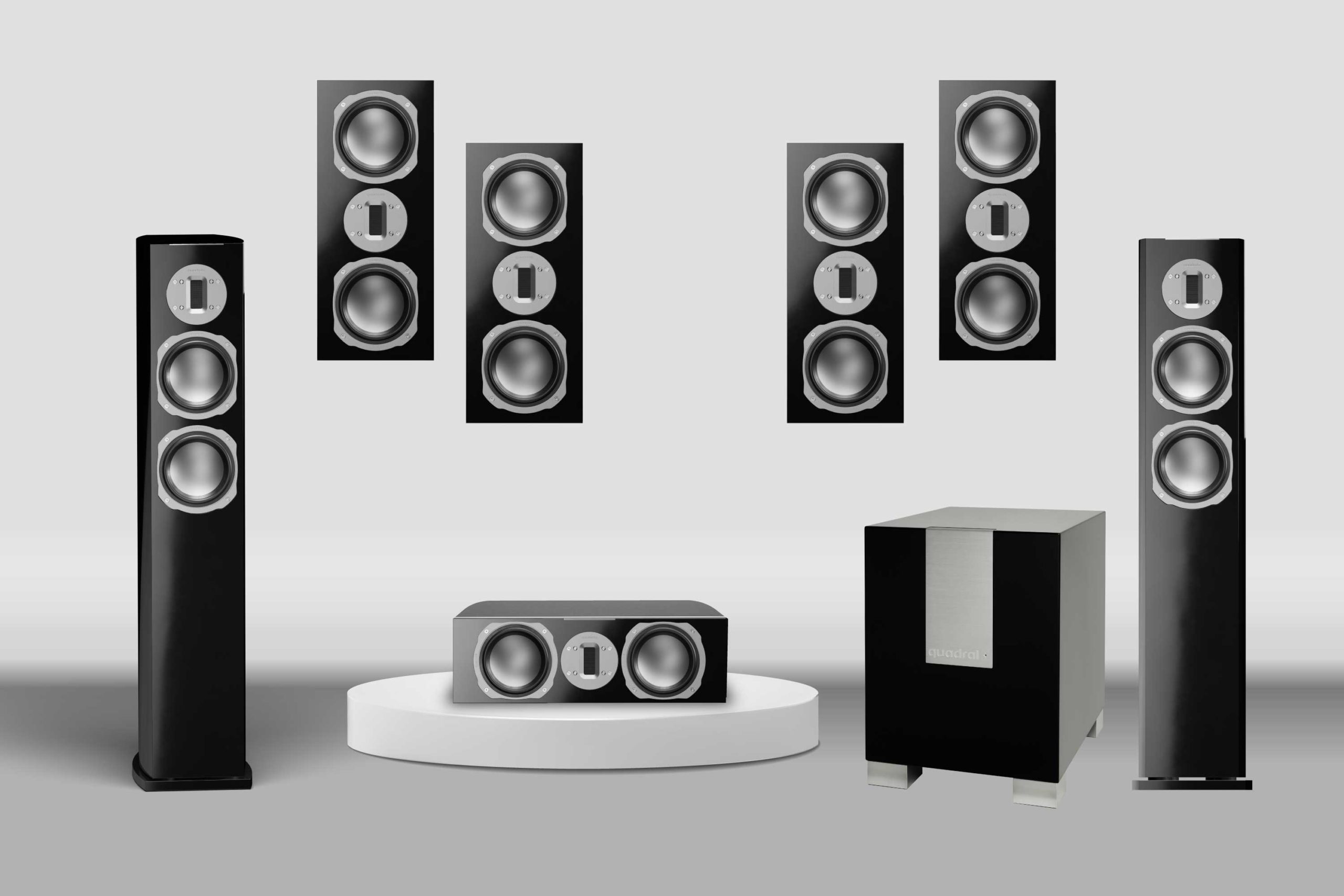
The set consists of:
- 2x Chromium 65 (Tower)
- 4x Chromium Phase (Wall)
- 1x Chromium 15 (Center)
- 1x Qube S8 (Woofer)
Ideal for an area of 15 to 25 square meters
€ 4.938,-

The set consists of:
- 2x Chromium 65 (Tower)
- 4x Chromium Phase (Wall)
- 1x Chromium 15 (Center)
- 1x Qube S8 (Woofer)
Ideal for an area of 15 to 25 square meters
€ 4.938,-
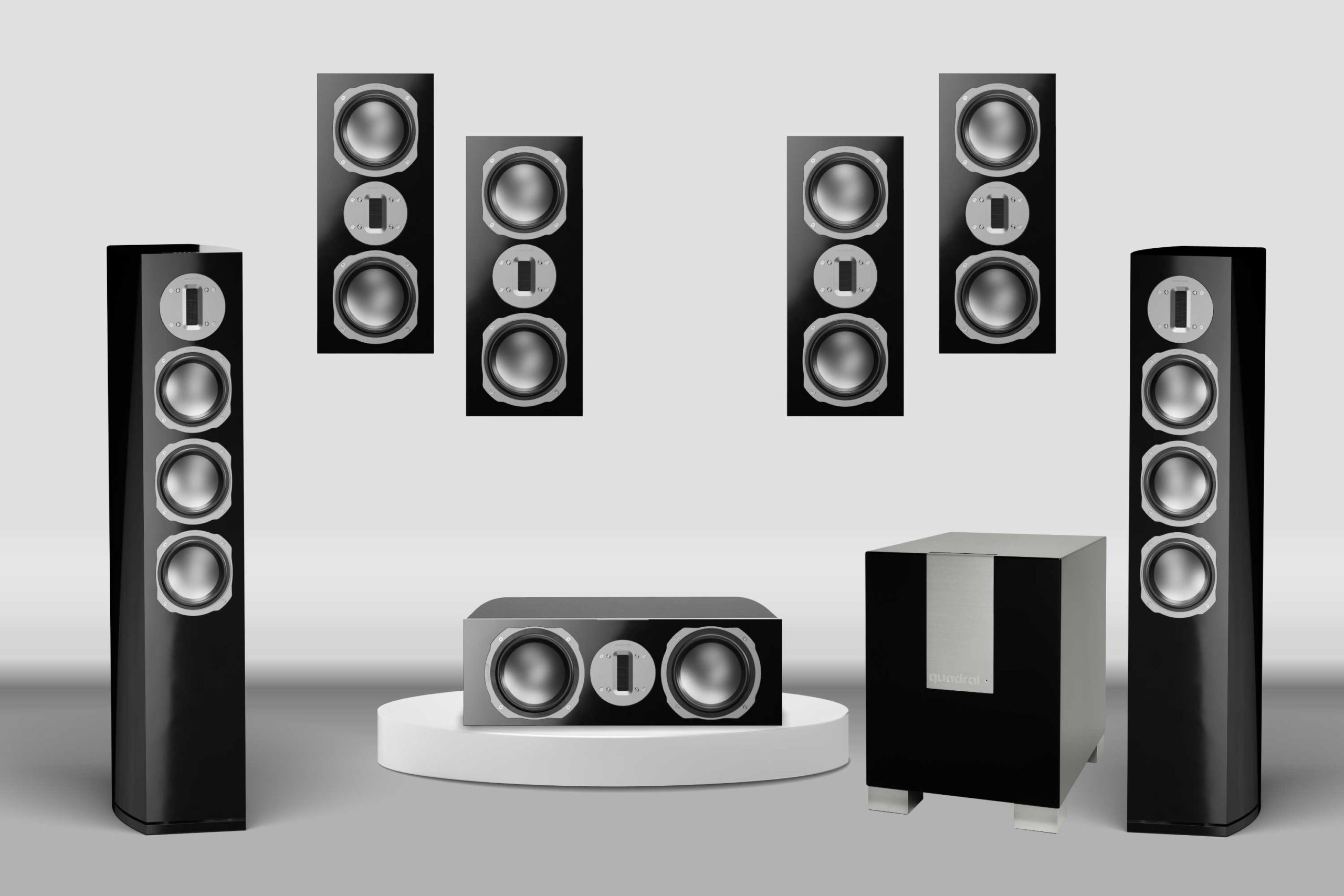
The set consists of:
- 2x Chromium 85 (Tower)
- 4x Chromium Phase (Wall)
- 1x Chromium 25 (Center)
- 1x Qube CS10 (Woofer)
Ideal for an area of 15 to 35 square meters
To the advisor
€ 6.193,-

The set consists of:
- 2x Chromium 85 (Tower)
- 4x Chromium Phase (Wall)
- 1x Chromium 25 (Center)
- 1x Qube CS10 (Woofer)
Ideal for an area of 15 to 35 square meters
To the advisor
€ 6.193,-
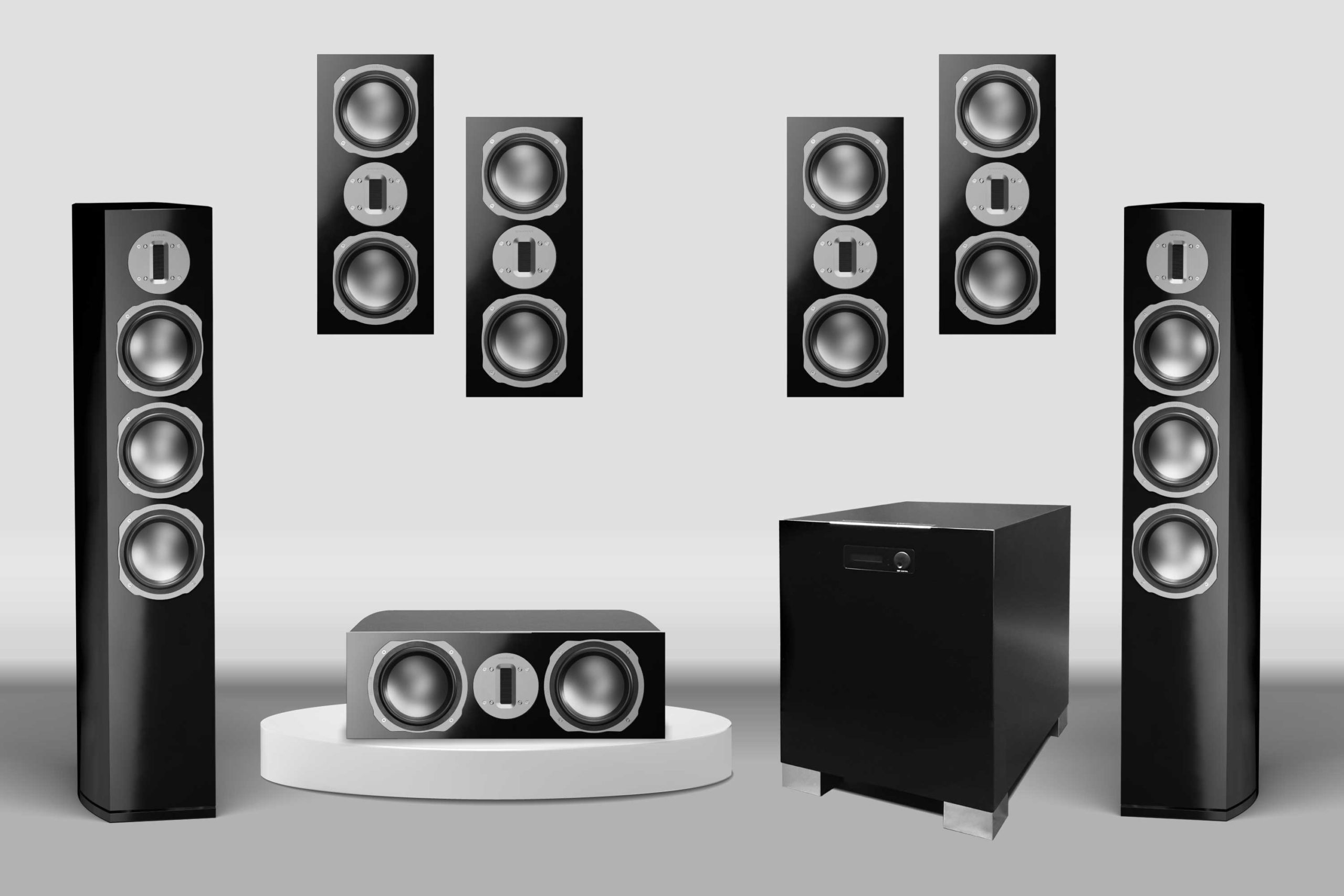
The set consists of:
- 2x Chromium 105 (Tower)
- 4x Chromium Phase (Wall)
- 1x Chromium 25 (Center)
- 1x Qube Orkus DSP (Woofer)
Ideal for an area of 20 to 35 square meters
To the advisor
€ 8.494,-

The set consists of:
- 2x Chromium 105 (Tower)
- 4x Chromium Phase (Wall)
- 1x Chromium 25 (Center)
- 1x Qube Orkus DSP (Woofer)
Ideal for an area of 20 to 35 square meters
To the advisor
€ 8.494,-
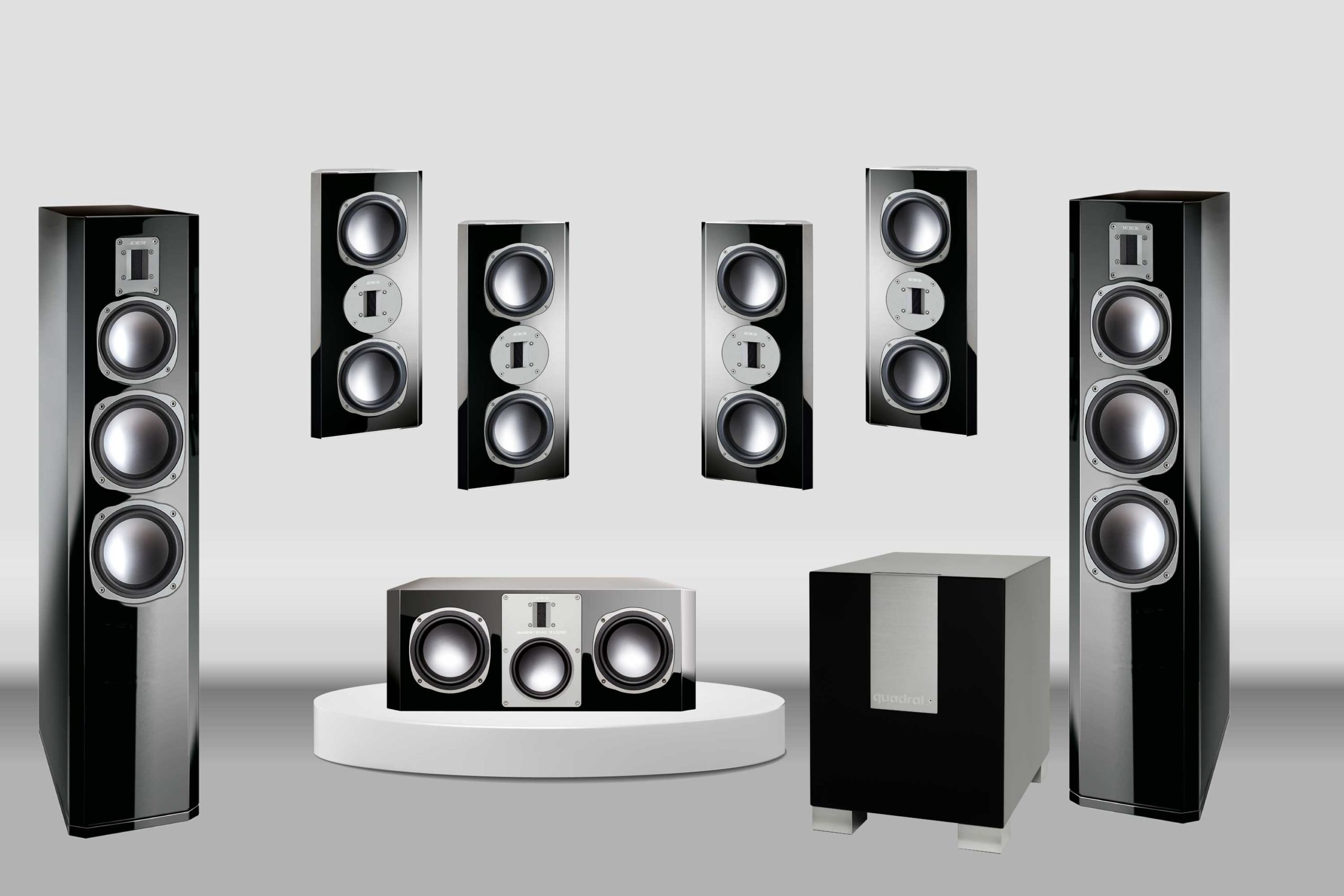
The set consists of:
- 2x Aurum Orkan (Tower)
- 4x Aurum Phase (Wall)
- 1x Aurum Base Maxime (Center)
- 1x Qube CS10 (Woofer)
Ideal for an area of 15 to 35 square meters
€ 12.998,-

The set consists of:
- 2x Aurum Orkan (Tower)
- 4x Aurum Phase (Wall)
- 1x Aurum Base Maxime (Center)
- 1x Qube CS10 (Woofer)
Ideal for an area of 15 to 35 square meters
€ 12.998,-
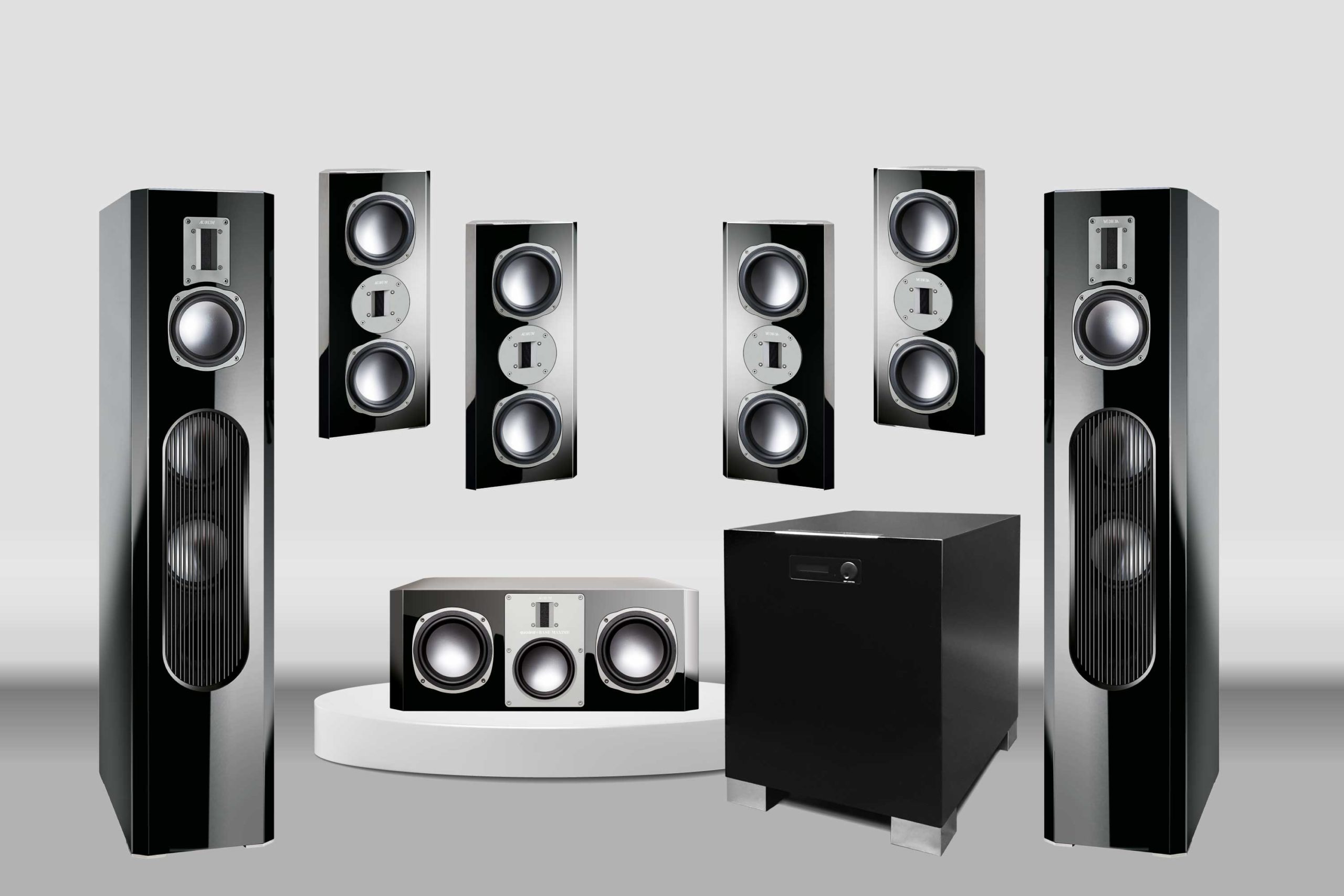
The set consists of:
- 2x Aurum Montan (Tower)
- 4x Aurum Phase (Wall)
- 1x Aurum Base Maxime (Center)
- 1x Qube Orkus DSP (Woofer)
Ideal for an area of 15 to 35 square meters
To the advisor
€ 16.999,-

The set consists of:
- 2x Aurum Montan (Tower)
- 4x Aurum Phase (Wall)
- 1x Aurum Base Maxime (Center)
- 1x Qube Orkus DSP (Woofer)
Ideal for an area of 15 to 35 square meters
To the advisor
€ 16.999,-
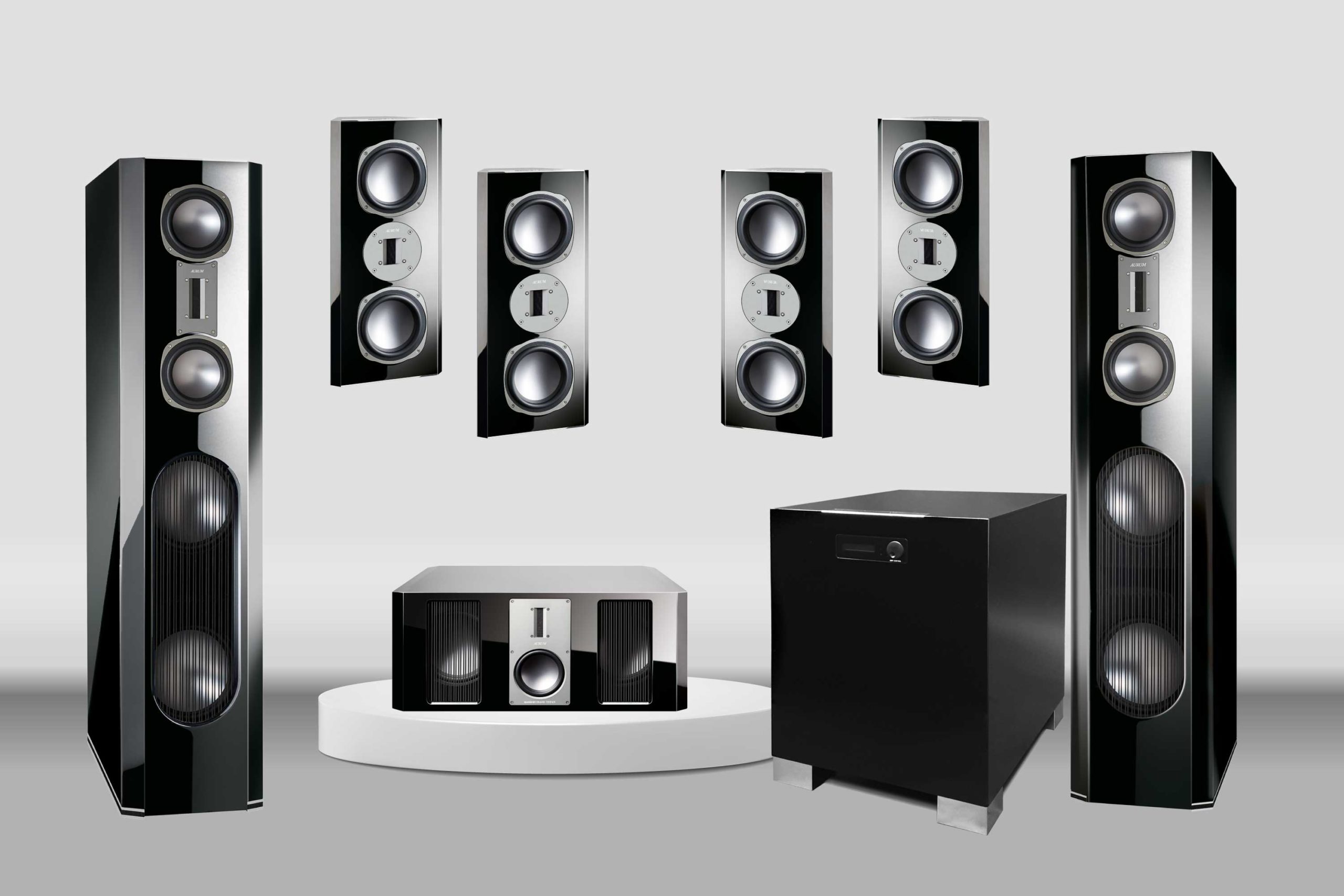
The set consists of:
- 2x Aurum Vulkan (Tower)
- 4x Aurum Phase (Wall)
- 1x Aurum Base Titan (Center)
- 1x Qube Orkus DSP (Woofer)
Ideal for an area of 20 to 40 square meters
To the advisor
€ 25.249,-

The set consists of:
- 2x Aurum Vulkan (Tower)
- 4x Aurum Phase (Wall)
- 1x Aurum Base Titan (Center)
- 1x Qube Orkus DSP (Woofer)
Ideal for an area of 20 to 40 square meters
To the advisor
€ 25.249,-
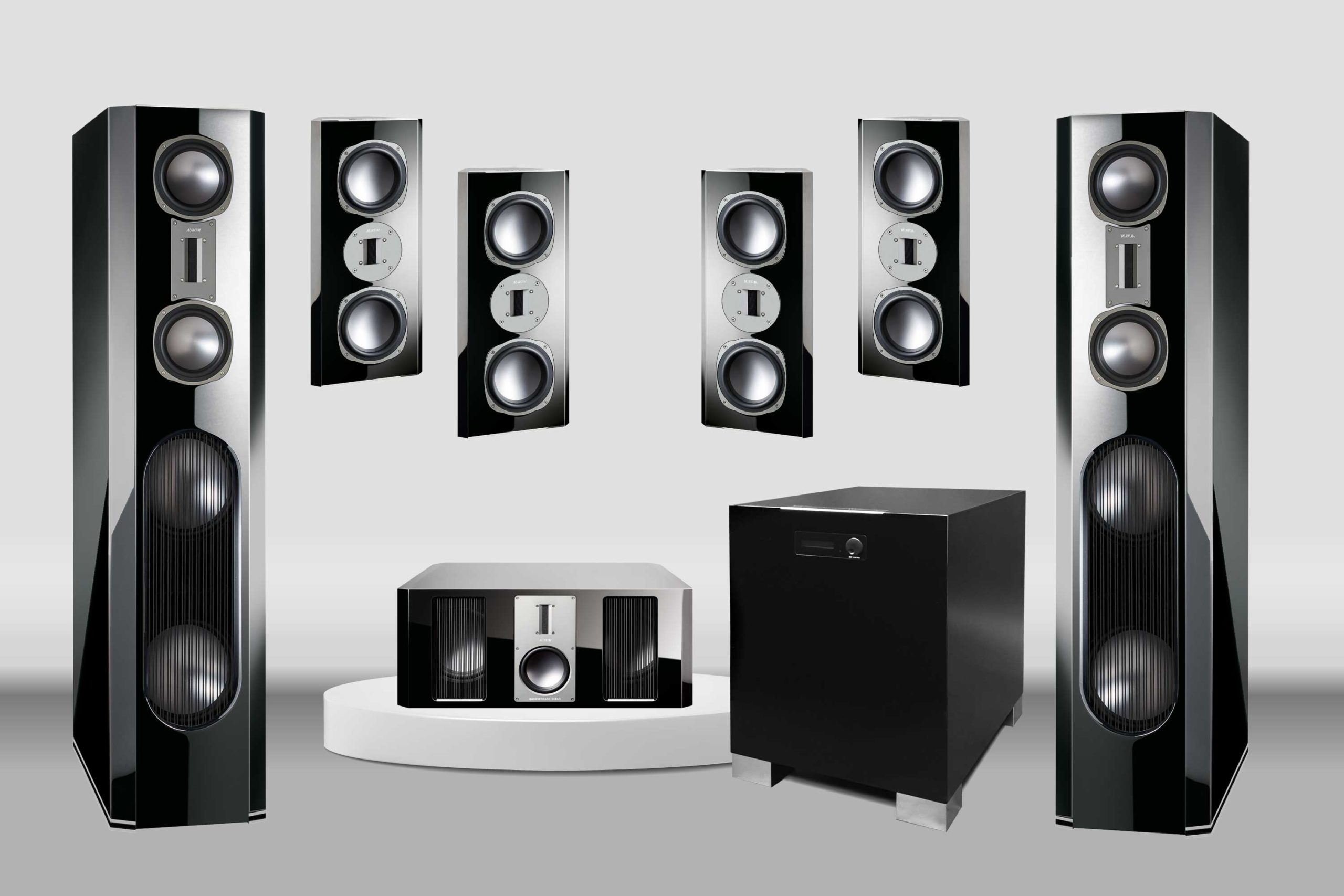
The set consists of:
- 2x Aurum Titan (Tower)
- 4x Aurum Phase (Wall)
- 1x Aurum Base Titan (Center)
- 1x Qube Orkus DSP (Woofer)
Ideal for an area of 25 to 45 square meters
To the advisor
€ 29.249,-

The set consists of:
- 2x Aurum Titan (Tower)
- 4x Aurum Phase (Wall)
- 1x Aurum Base Titan (Center)
- 1x Qube Orkus DSP (Woofer)
Ideal for an area of 25 to 45 square meters
To the advisor
€ 29.249,-

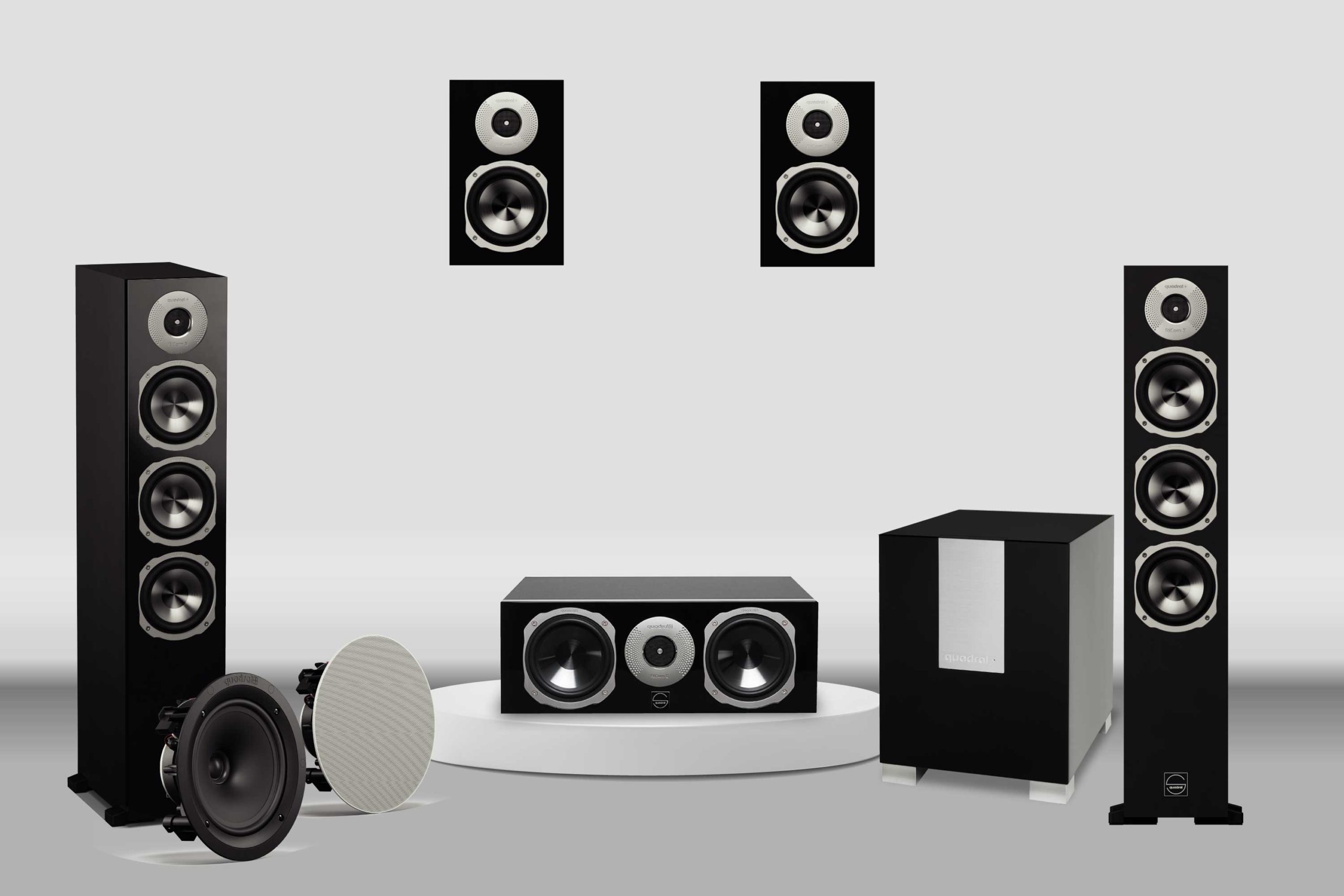
The set consists of:
- 2x Signum 70 (Tower)
- 2x Signum Phase 1 (Wall)
- 1x Signum 10 (Center)
- 1x Qube S8 (Woofer)
Ideal for an area of 15 to 25 square meters
To the advisor
€ 2.631,-

The set consists of:
- 2x Signum 70 (Tower)
- 2x Signum Phase 1 (Wall)
- 1x Signum 10 (Center)
- 1x Qube S8 (Woofer)
Ideal for an area of 15 to 25 square meters
To the advisor
€ 2.631,-
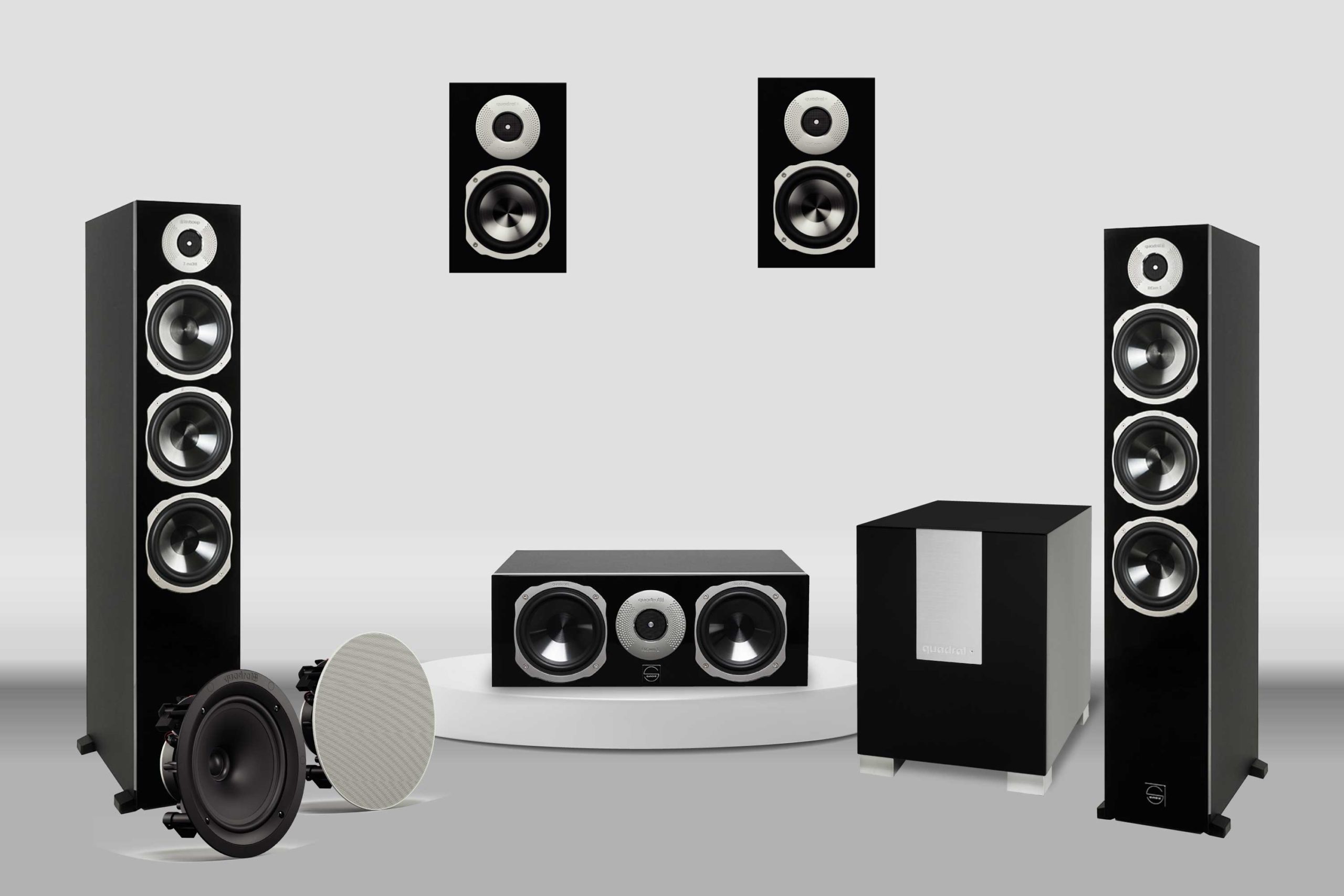
The set consists of:
- 2x Signum 90 (Tower)
- 2x Signum Phase 1 (Wall)
- 1x Signum 10 (Center)
- 1x In-Ceiling 7 (Ceiling)
- 1x Qube S8 (Woofer)
Ideal for an area of 15 to 35 square meters
To the advisor
€ 2.831,-

The set consists of:
- 2x Signum 90 (Tower)
- 2x Signum Phase 1 (Wall)
- 1x Signum 10 (Center)
- 1x In-Ceiling 7 (Ceiling)
- 1x Qube S8 (Woofer)
Ideal for an area of 15 to 35 square meters
To the advisor
€ 2.831,-
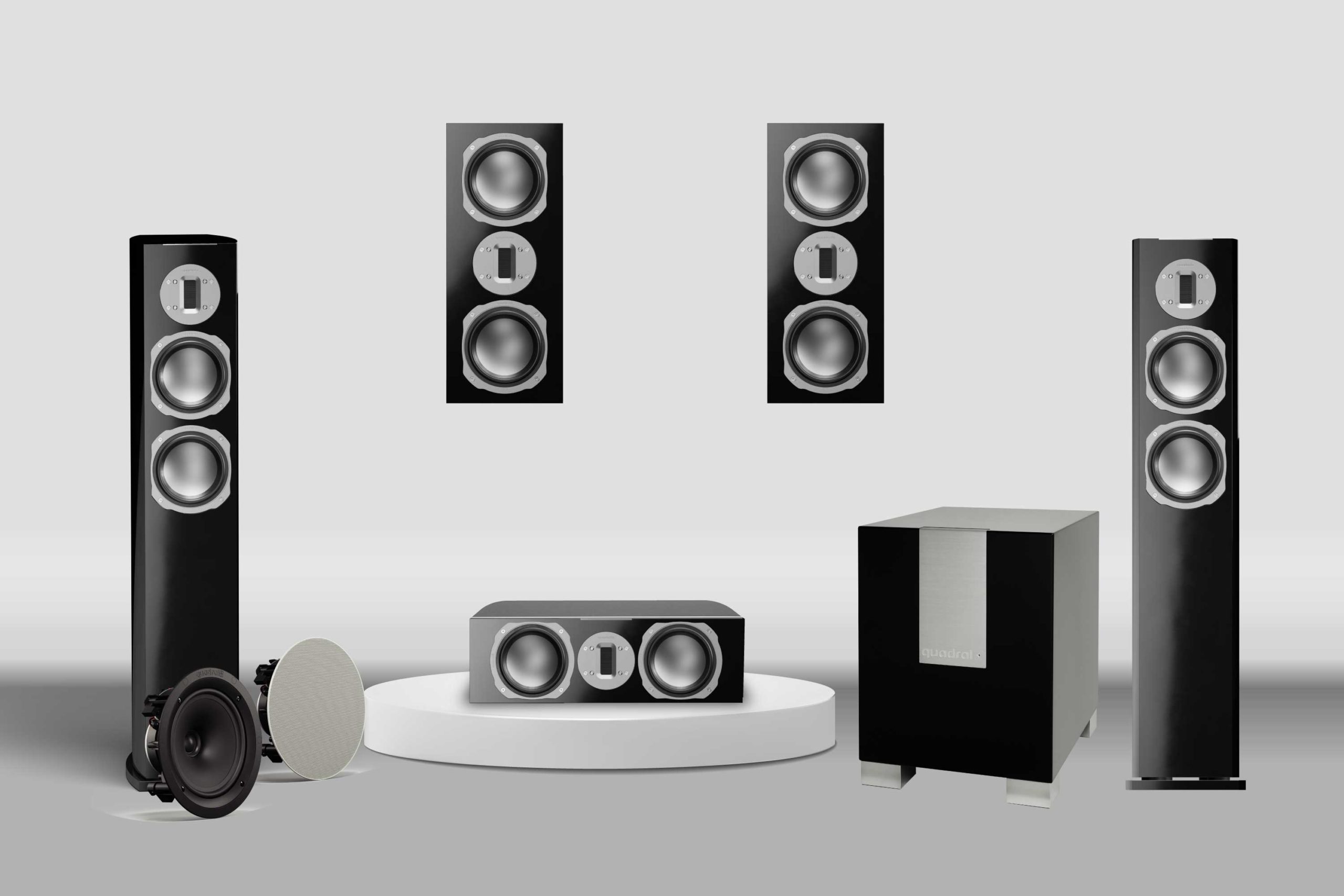
The set consists of:
- 2x Chromium 65 (Tower)
- 2x Chromium Phase (Wall)
- 1x Chromium 15 (Center)
- 2x In-Ceiling 7 (Center)
- 1x Qube S8 (Woofer)
Ideal for an area of 15 to 25 square meters
To the advisor
€ 4.126,-

The set consists of:
- 2x Chromium 65 (Tower)
- 2x Chromium Phase (Wall)
- 1x Chromium 15 (Center)
- 2x In-Ceiling 7 (Center)
- 1x Qube S8 (Woofer)
Ideal for an area of 15 to 25 square meters
To the advisor
€ 4.126,-
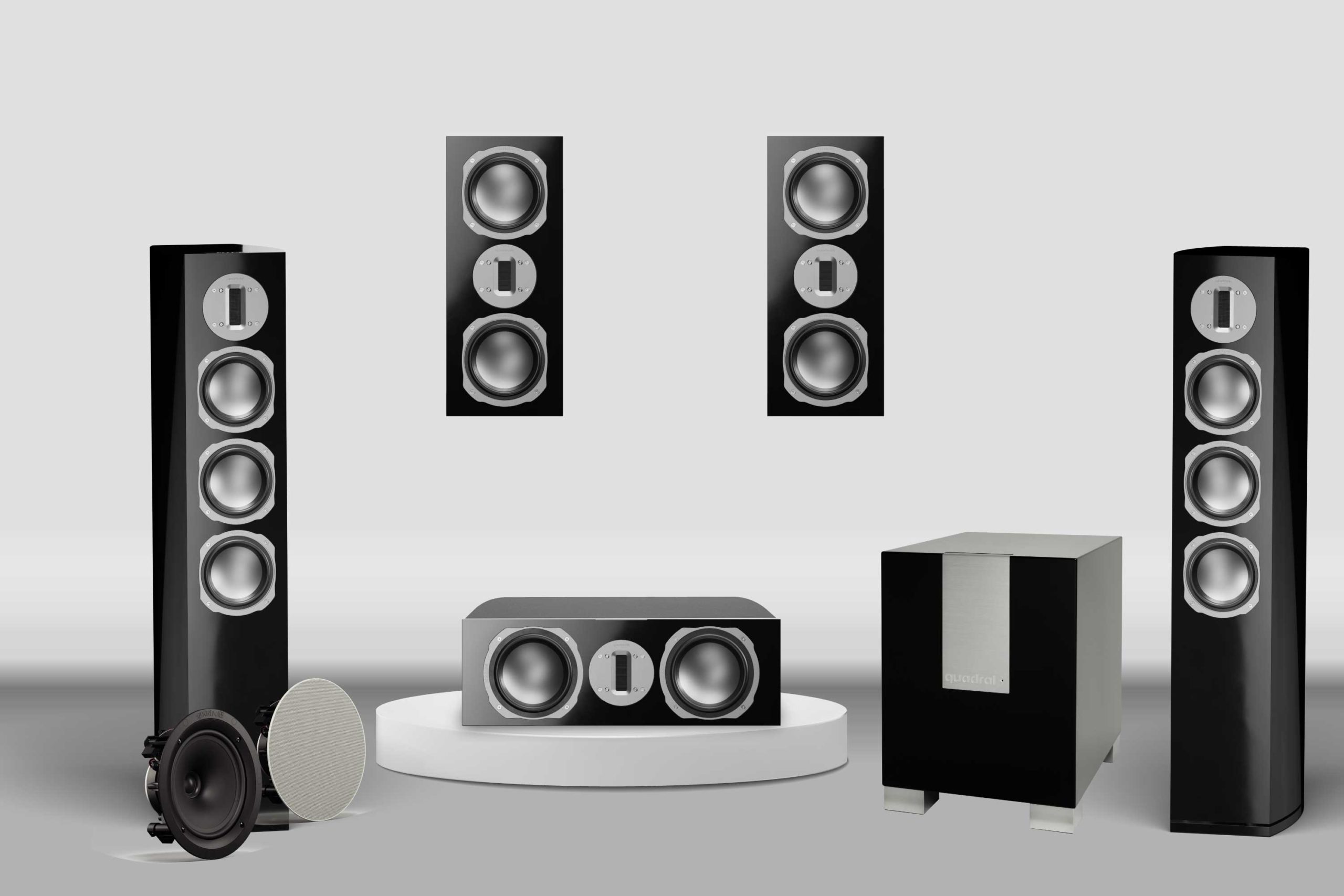
The set consists of:
- 2x Chromium 85 (Tower)
- 2x Chromium Phase (Wall)
- 1x Chromium 25 (Center)
- 2x In-Ceiling 7 (Ceiling)
- 1x Qube CS10 (Woofer)
Ideal for an area of 15 to 35 square meters
To the advisor
€ 5.381,-

The set consists of:
- 2x Chromium 85 (Tower)
- 2x Chromium Phase (Wall)
- 1x Chromium 25 (Center)
- 2x In-Ceiling 7 (Ceiling)
- 1x Qube CS10 (Woofer)
Ideal for an area of 15 to 35 square meters
To the advisor
€ 5.381,-
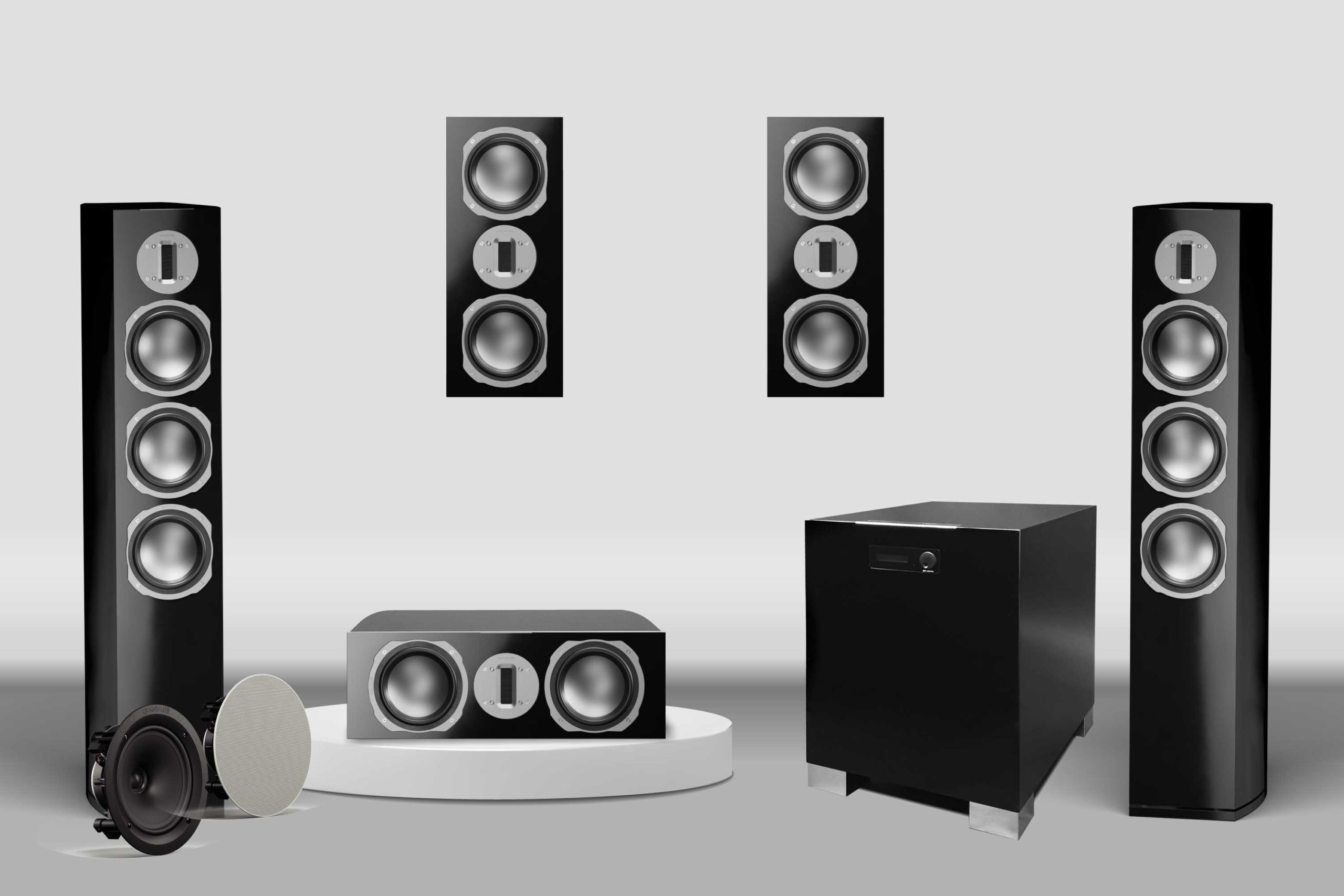
The set consists of:
- 2x Chromium 105 (Tower)
- 2x Chromium Phase (Wall)
- 1x Chromium 25 (Center)
- 2x In-Ceiling 7 (Ceiling)
- 1x Qube Orkus DSP (Woofer)
Ideal for an area of 20 to 35 square meters
To the advisor
€ 8.782,-

The set consists of:
- 2x Chromium 105 (Tower)
- 2x Chromium Phase (Wall)
- 1x Chromium 25 (Center)
- 2x In-Ceiling 7 (Ceiling)
- 1x Qube Orkus DSP (Woofer)
Ideal for an area of 20 to 35 square meters
To the advisor
€ 8.782,-
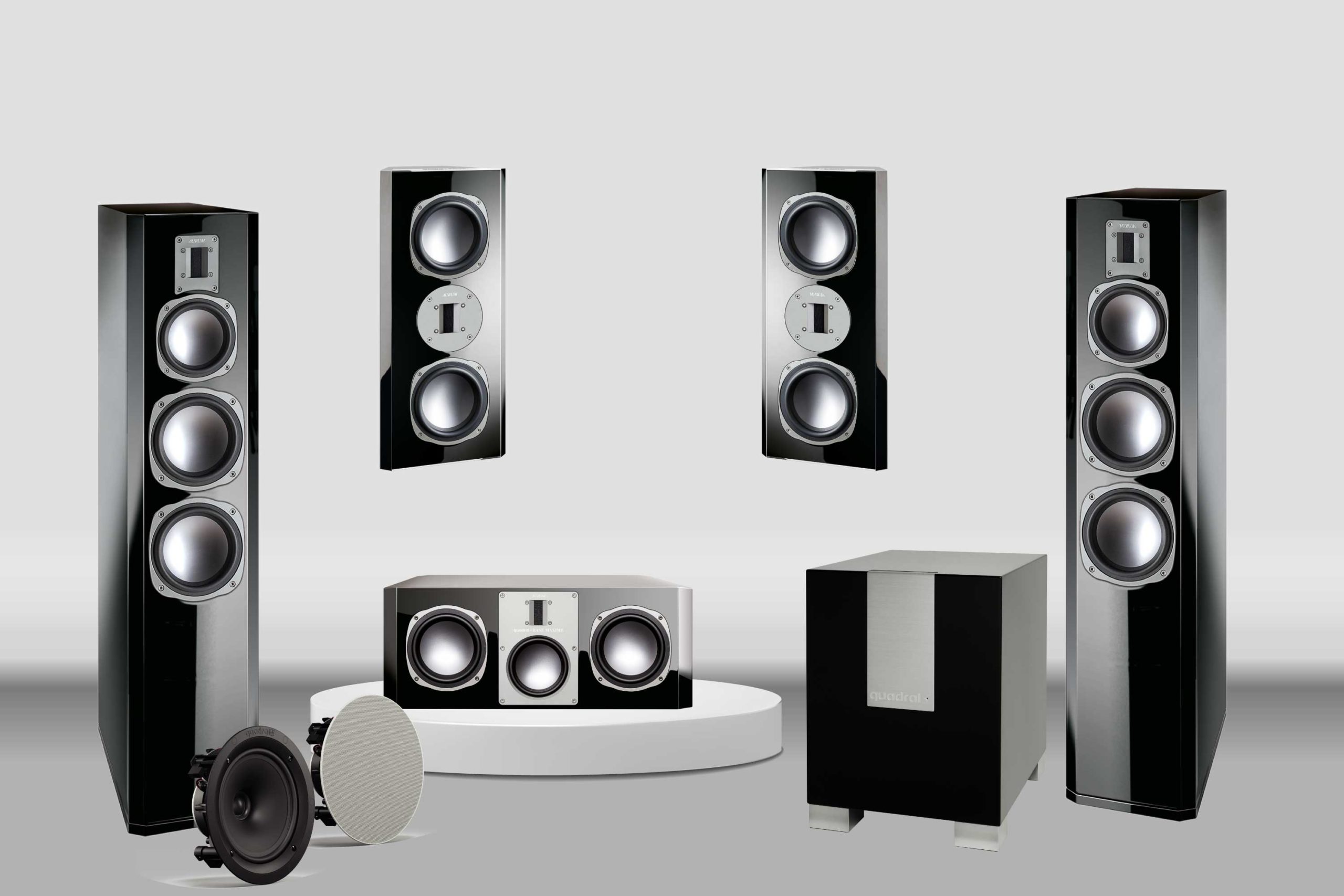
The set consists of:
- 2x Aurum Orkan (Tower)
- 2x Aurum Phase (Wall)
- 1x Aurum Base Maxime (Center)
- 2x In-Ceiling 7 (Ceiling)
- 1x Qube CS10 (Woofer)
Ideal for an area of 15 to 35 square meters
To the advisor
€ 10.286,-

The set consists of:
- 2x Aurum Orkan (Tower)
- 2x Aurum Phase (Wall)
- 1x Aurum Base Maxime (Center)
- 2x In-Ceiling 7 (Ceiling)
- 1x Qube CS10 (Woofer)
Ideal for an area of 15 to 35 square meters
To the advisor
€ 10.286,-
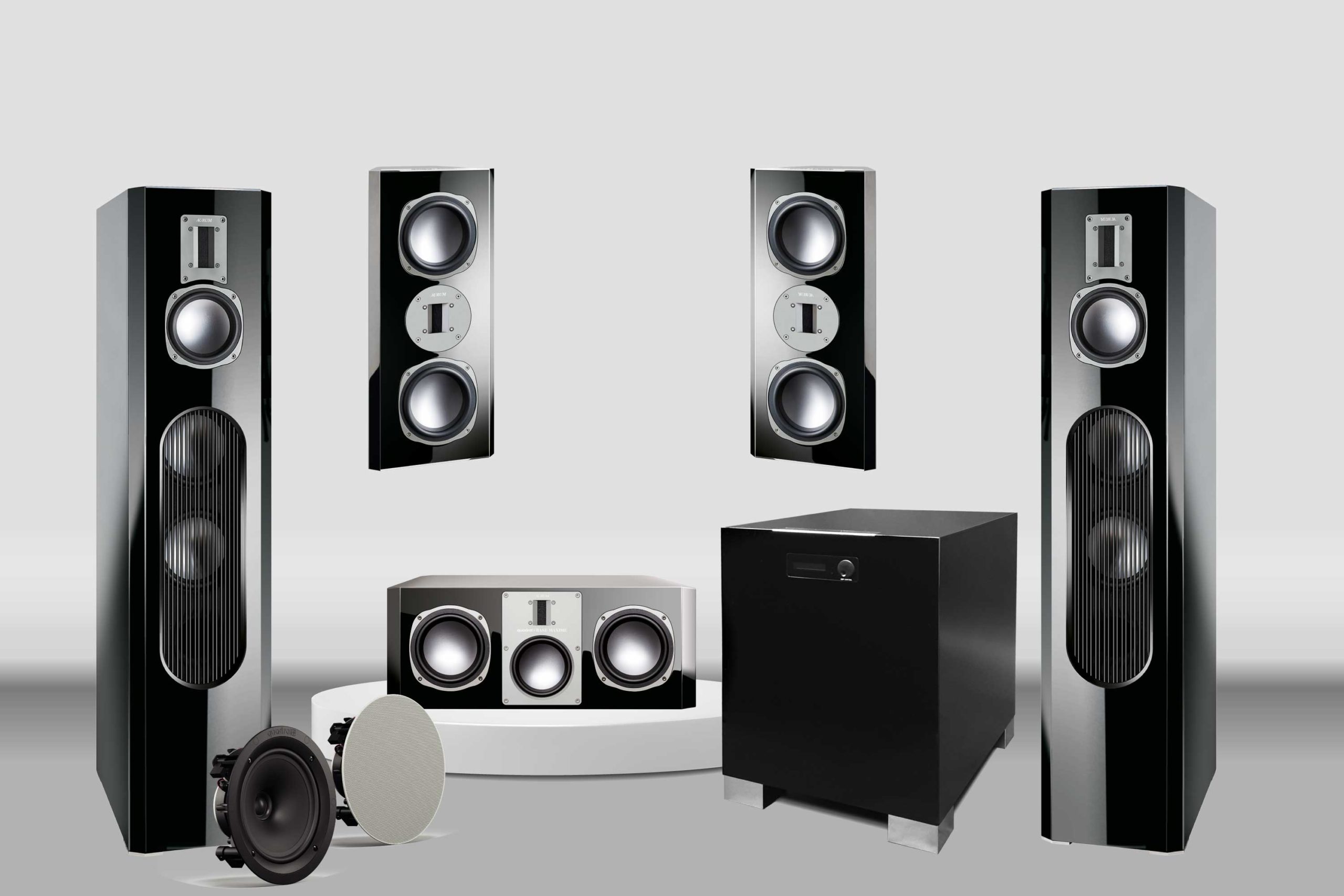
The set consists of:
- 2x Aurum Montan (Tower)
- 2x Aurum Phase (Wall)
- 1x Aurum Base Maxime (Center)
- 2x In-Ceiling 7 (Ceiling)
- 1x Qube Orkus DSP (Woofer)
Ideal for an area of 15 to 35 square meters
To the advisor
€ 14.287,-

The set consists of:
- 2x Aurum Montan (Tower)
- 2x Aurum Phase (Wall)
- 1x Aurum Base Maxime (Center)
- 2x In-Ceiling 7 (Ceiling)
- 1x Qube Orkus DSP (Woofer)
Ideal for an area of 15 to 35 square meters
To the advisor
€ 14.287,-
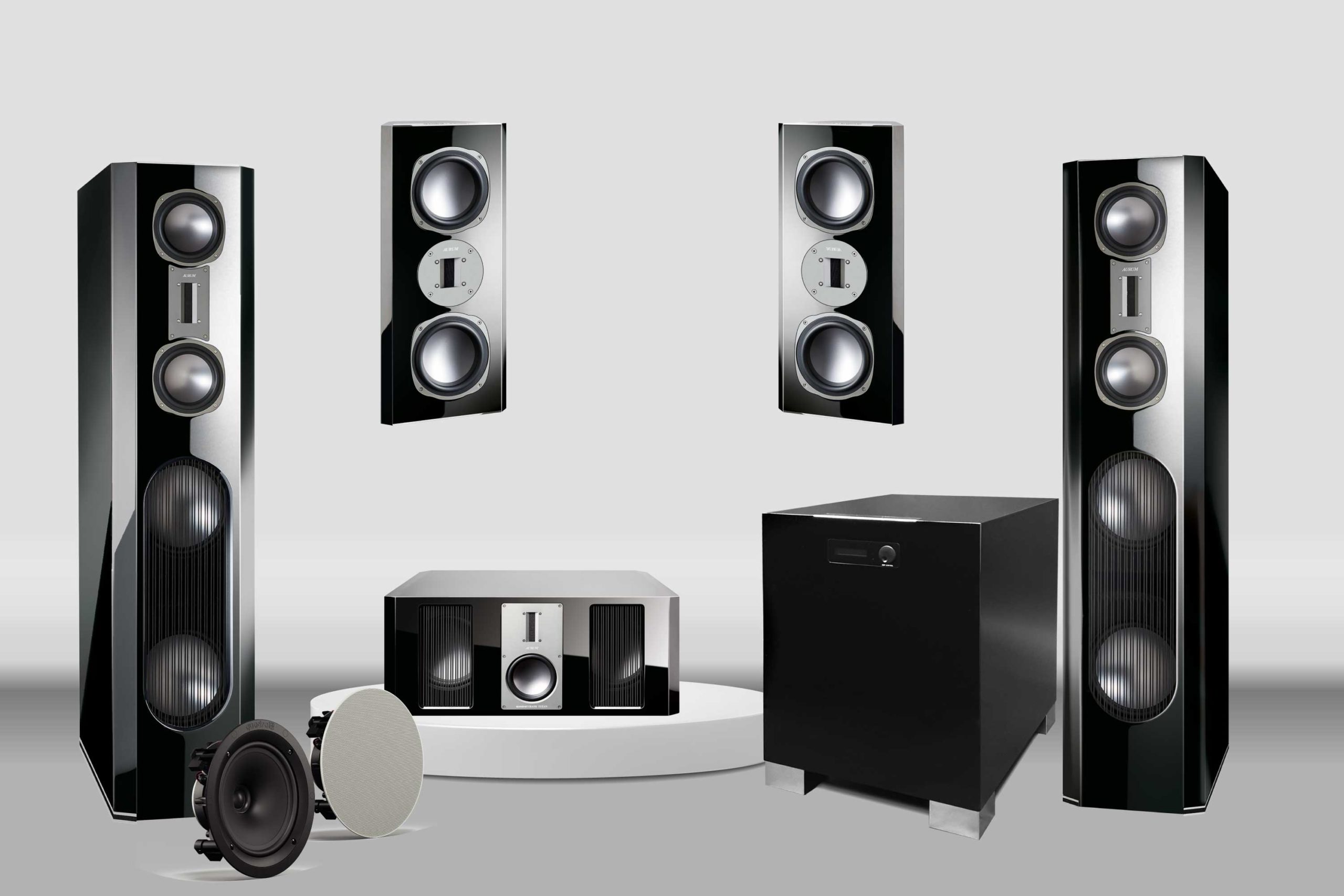
The set consists of:
- 2x Aurum Vulkan (Tower)
- 2x Aurum Phase (Wall)
- 1x Aurum Base Titan (Center)
- 2x In-Ceiling 7 (Ceiling)
- 1x Qube Orkus DSP (Woofer)
Ideal for an area of 20 to 40 square meters
To the advisor
€ 22.537,-

The set consists of:
- 2x Aurum Vulkan (Tower)
- 2x Aurum Phase (Wall)
- 1x Aurum Base Titan (Center)
- 2x In-Ceiling 7 (Ceiling)
- 1x Qube Orkus DSP (Woofer)
Ideal for an area of 20 to 40 square meters
To the advisor
€ 22.537,-
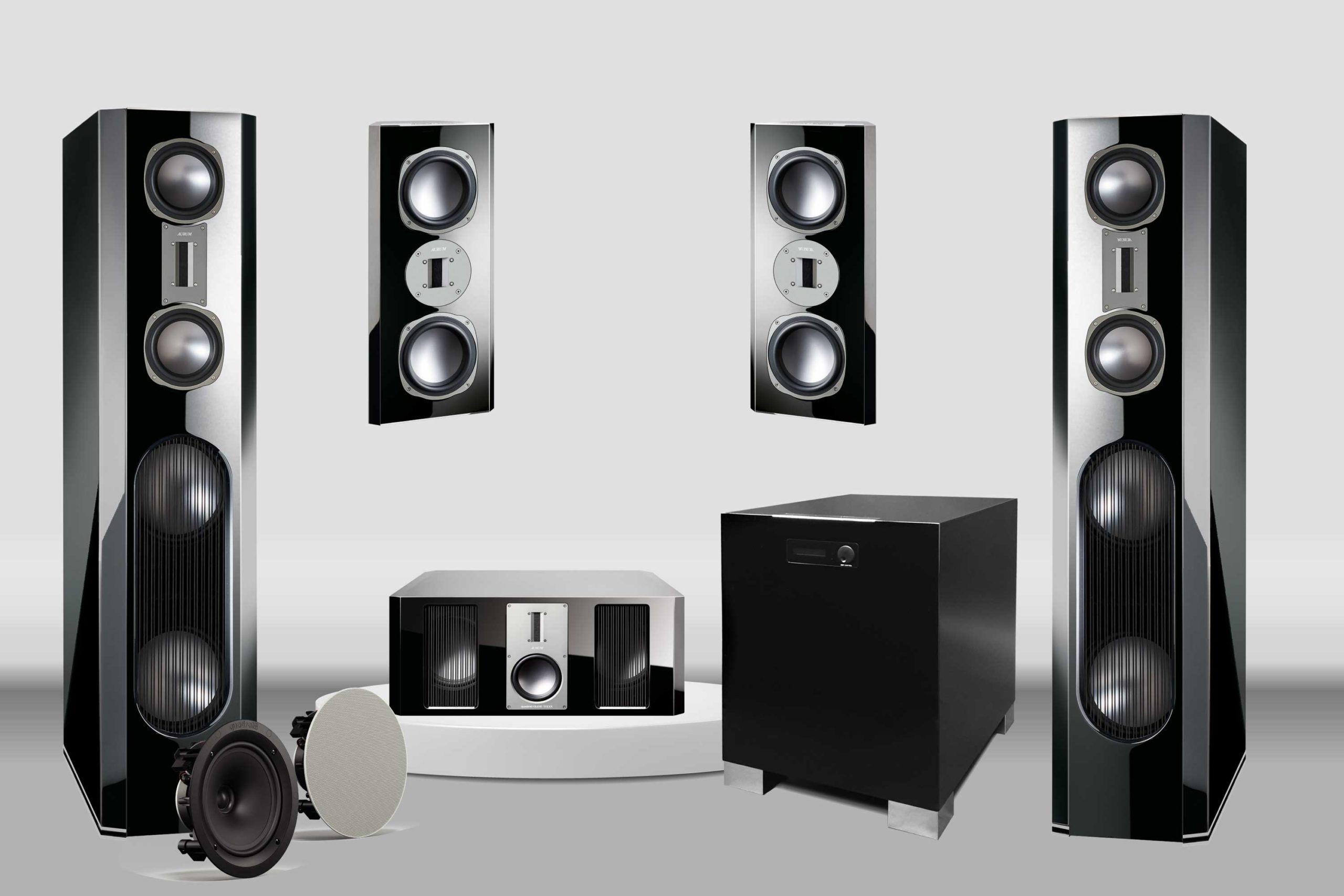
The set consists of:
- 2x Aurum Titan (Tower)
- 2x Aurum Phase (Wall)
- 1x Aurum Base Titan (Center)
- 2x In-Ceiling 7 (Ceiling)
- 1x Qube Orkus DSP (Woofer)
Ideal for an area of 25 to 45 square meters
To the advisor
€ 29.537,-

The set consists of:
- 2x Aurum Titan (Tower)
- 2x Aurum Phase (Wall)
- 1x Aurum Base Titan (Center)
- 2x In-Ceiling 7 (Ceiling)
- 1x Qube Orkus DSP (Woofer)
Ideal for an area of 25 to 45 square meters
To the advisor
€ 29.537,-

5.1, 7.1 or Dolby Atmos? What suits me?
An intense sound that can be experienced spatially is the be-all and end-all for a perfect home cinema experience. In addition to the optimal product selection, the ideal placement of the sound sources is also of crucial importance. The aim is the best possible localization of the sound sources for an even distribution of the sound.
For this purpose, five identical full-range loudspeakers for front, center and surround are ideally used in the home cinema area. In contrast to the sound of cinema films, music clips in particular are often mixed without a center and LFE channel in the TV area. The requirement of a strictly central localization as with a large cinema audience therefore does not exist in home cinema.
What is 5.1?
This most classic multi-channel layout, has been around for more than two decades. The sound standards Dolby Digital 5.1 and DTS Digital Surround 5.1 were developed at the end of the previous millennium for captivating film enjoyment in your own four walls. Originally from large cinema halls, everything was “scaled down” so that home cinema fans could enjoy a real cinema feeling at home, but in a simplified form.
In the interest of the best channel separation and new possibilities for effect design, discrete and completely independent, channels were available for front left, front right, center, surround left and surround right. In addition, there was the .1 channel, also known as the “Low Frequency Effects” (LFE) channel, for the integration of a dedicated,active subwoofer, which only had to reproduce low frequencies. Five channels that present the entire frequency spectrum, plus a specialist for deep effects – this caused a veritable multi-channel boom. Loudspeaker manufacturers introduced high-quality center and surround loudspeakers, because since each channel was completely independent and powerful, appropriately designed box systems were needed. Powerful active subwoofers also entered the market with great success.
The multi-channel audio tracks were initially on DVDs and later on Blu-ray. Streaming was still a long way off at the beginning. The classic 5.1 constellation is still very popular today, and titles that were mixed in newer sound formats such as Dolby Atmos or DTS:X are also fully backwards compatible with conventional 5.1 systems. Right from the start, multi-channel soundtracks were used not only for film material but also for music. A gripping live concert or a classical opera developed, recorded and implemented in multiple channels, much more liveliness, space and thus potential for fascination.
Examples of a 5.1 Setup
A setup for 5.1 consists of 5 speakers and a subwoofer.

- 2x tower speakers (each on the left and right of the TV set)
- 1x center speaker under the TV
- 1x subwoofer to TV wall
- 2x wall speakers to the sofa wall at head height (alternatively 2 small floorstanding speakers)
What is 7.1?
It only took a few years before the 5.1 layout was no longer extensive enough for the responsible developers at Dolby and DTS. There was finally more going on behind the backs of the audience – the birth of Dolby Digital 5.1 EX, DTS-ES 6.1 Matrix and DTS-ES 6.1 Discrete. And again, as before with Dolby Digital 5.1 and DTS Digital Surround 5.1, the basic technology came directly from the big cinema hall. In the case of the two standards Dolby Digital EX and DTS-ES 6.1 Matrix, however, the fully discrete glory was over. Because the additional “back surround” channel was created here using a matrix.
You could also choose whether you wanted to distribute the back surround signal to one speaker (6.1 layout) or two speakers (7.1 layout). While 6.1 layouts are hard to find today, 7.1 channel layouts with two back surround speakers still exist.
The third, most interesting standard remains DTS-ES 6.1 Discrete. Here the additional sixth channel was actually generated discretely – which opened up new possibilities in terms of a precise, clearly locatable effect representation behind the auditorium.
With a 7.1 system, the 5.1 system is expanded again and unbelievable sound worlds are created. However, more space is needed for this, as in this case two additional speakers, hence seven, are installed (plus bass and control technology). In addition, the seating position must be in the middle of the room so that the loudspeakers can be placed behind the listener.
The result is a finely tuned sound that turns the corresponding films into a real experience. And that brings us to the next restriction: the films must have a corresponding number of soundtracks. The latest blockbusters deliver that, but usually not simple films from the TV.
Example of a 7.1 Setup
A 7.1 setup consists of 7 speakers and a subwoofer.

- 2x tower speakers (each on the left and right of the TV set)
- 1x center speaker under the TV
- 1x subwoofer to TV wall
- 2x Wandlautsprecher an den Seitenwänden
- 2x wall speakers to the sofa wall at head height (alternatively 2 small floorstanding speakers)
What is Atmos?
With the advent of 4K smart TVs, which have four times the number of pixels compared toFull HD-devicesa acoustic demands continued to rise. The big corporations Dolby and DTS took the big cinema as an example again – and also brought Dolby Atmos and DTS:X Home. Core idea: Thereshould be anotherlistening level above the heads of the listeners. “Immersive listening” became the newbuzzword, as well as „3D Audio“. There were and still aretwooptions for implementing this project in terms of the loudspeaker system: On the one hand, ceiling loudspeakers, on the other hand, add-on modules for the front or front/surround loudspeakers, which radiate at a precisely defined angle to the ceiling. In practice, two loudspeakers (only in front) or four loudspeakers (front and rear) are usually used.
But the creation of an additional listening level could only be realized with new technology. While the predecessors DTS-HD and Dolby Atmos still operated with a complete channel layout, this was only used as a basis for the new standards. Individual “audio objects” are used for an absolutely flexible distribution of effects in real time through the AV amplifier to the loudspeakers of the respective setup. Much more authentic effects were the immediate result. The layout designations for the speaker system: 5.1.4 – first the classic five channels, then the subwoofer channel, then the new treble channels – if you can put it that way at all, since each speaker is not simply fed by a “channel”, but rather individual, precisely coordinated audio objects for playback.
The way content is enjoyed has now radically changed – a lot is streamed, including in Dolby Atmos 3D object-based audio format. DTS:X is still found almost exclusively on Blu-ray and Ultra HD Blu-ray. But: Whether you’re streaming or popping in a disc, a quality speaker system is more important than ever. Of course, there is a trend towards soundbars that implement Dolby Atmos or DTS:X more or less poorly – but if you really want to know what 3D audio means, you will be delighted with a full-fledged, powerful speaker setup.
Example of a 5.1.2 Setup
A setup for 5.1.2 consists of 5 speakers and a subwoofer as well as 2 ceiling speakers.

- 2x tower speakers (each on the left and right of the TV set)
- 1x center speaker under the TV
- 1x subwoofer to TV wall
- 2x ceiling speakers
- 2x wall speakers to the sofa wall at head height (alternatively 2 small floorstanding speakers)